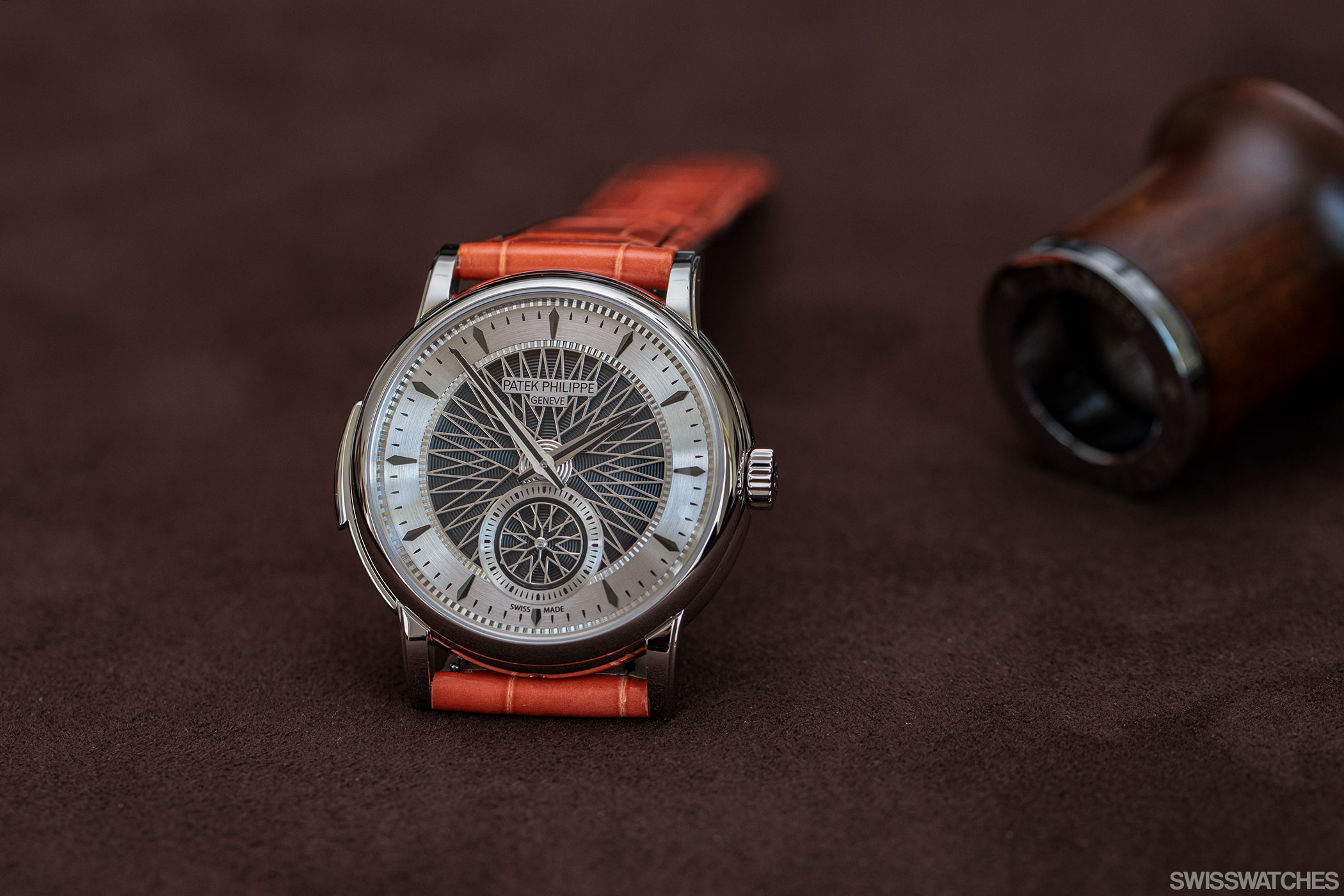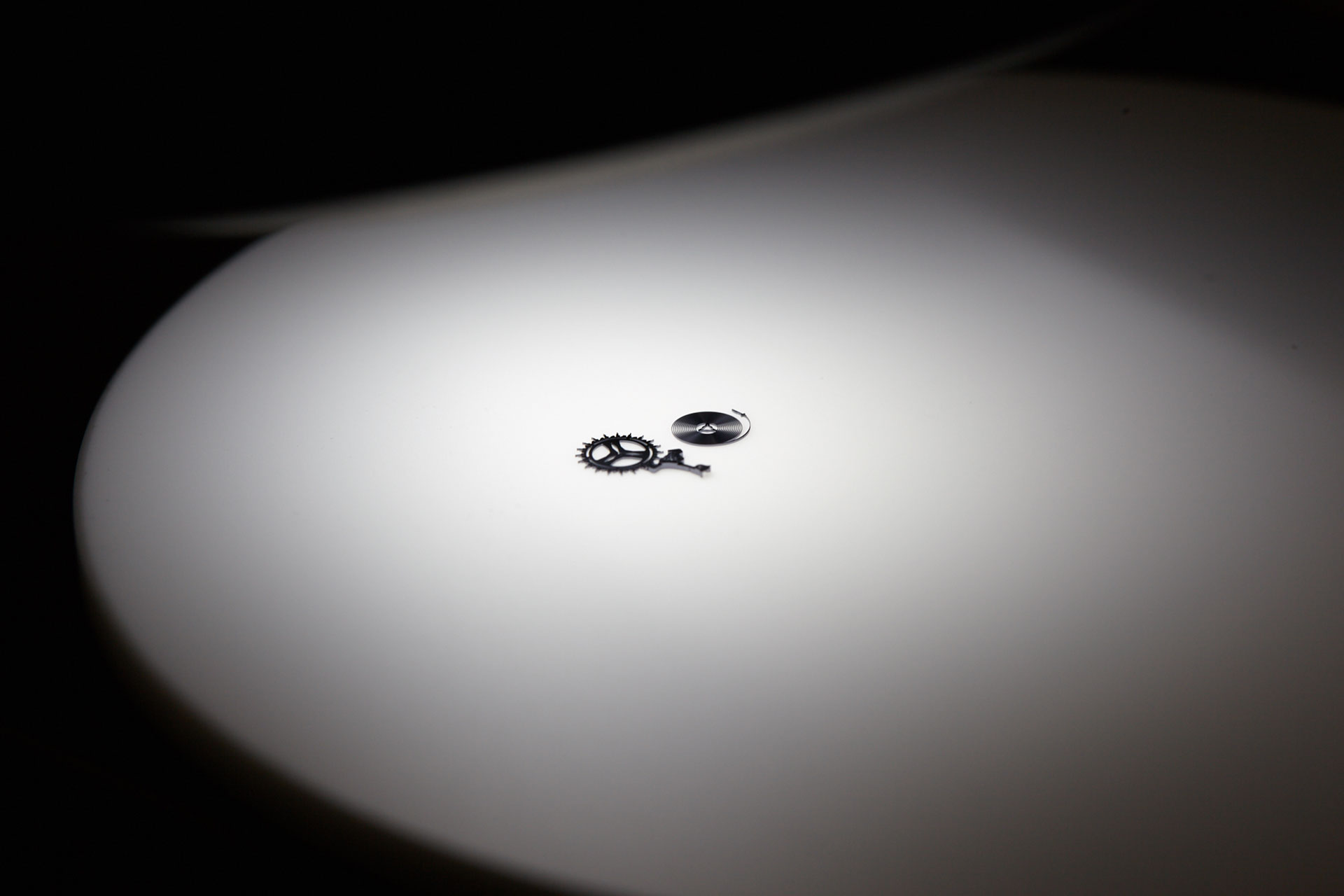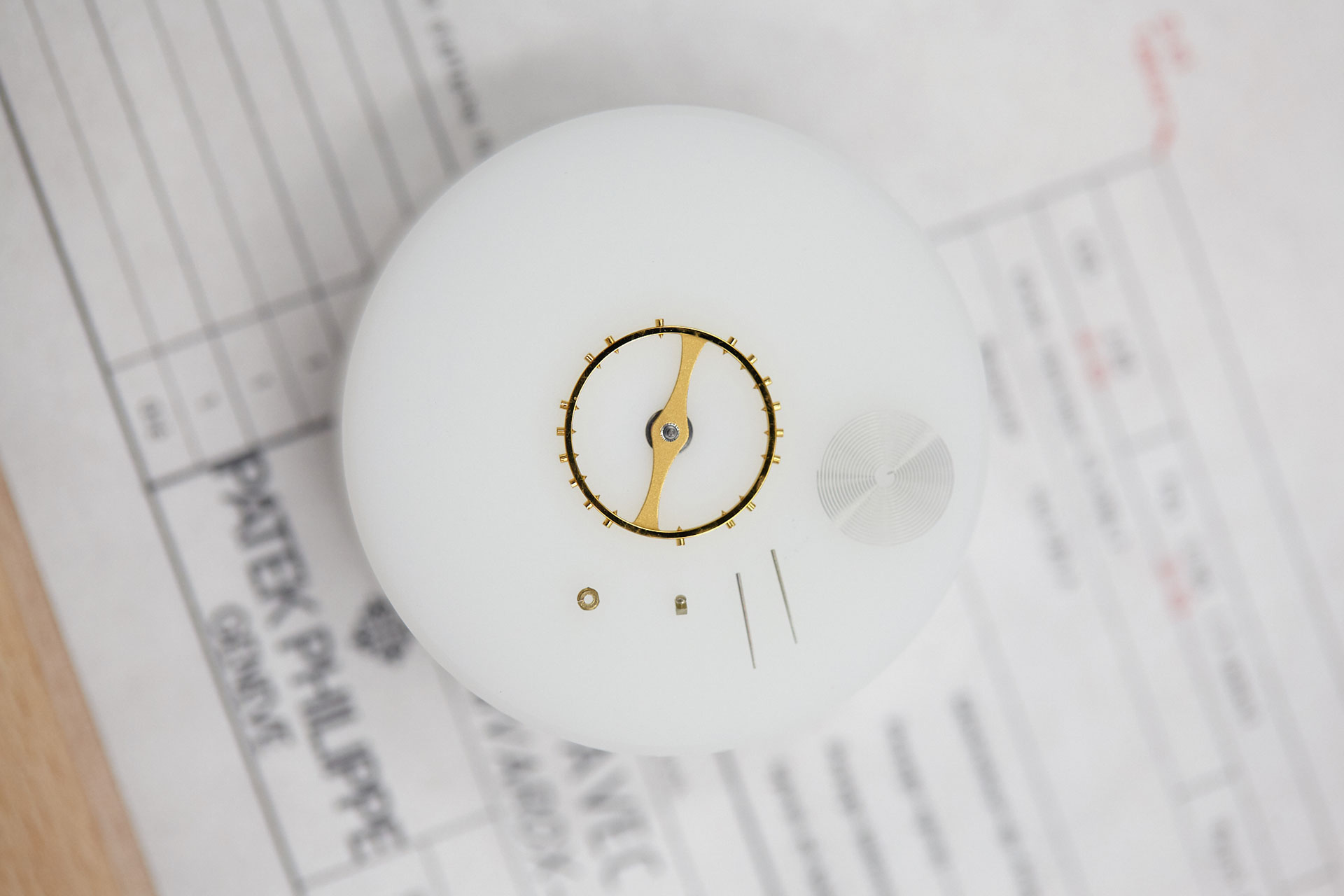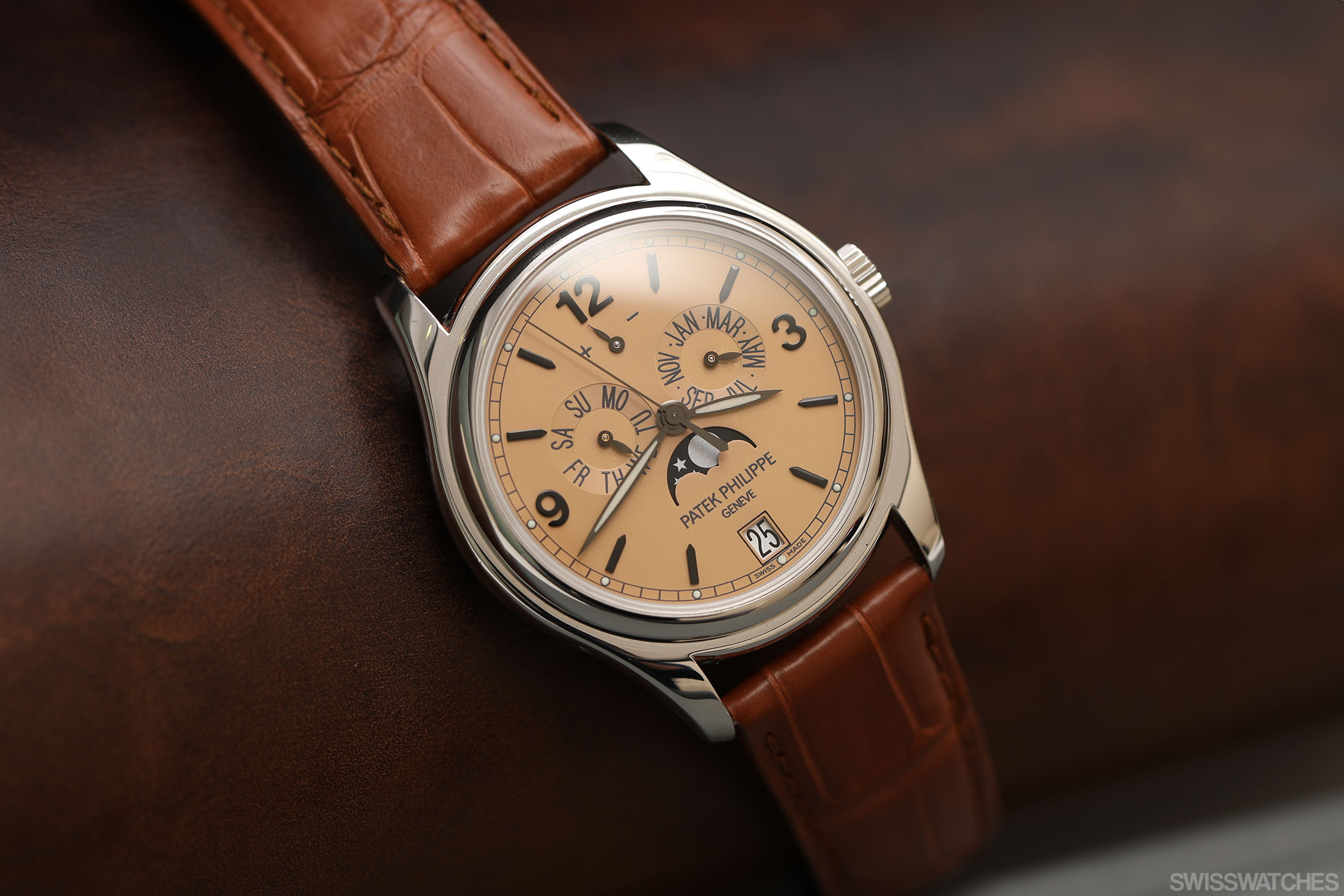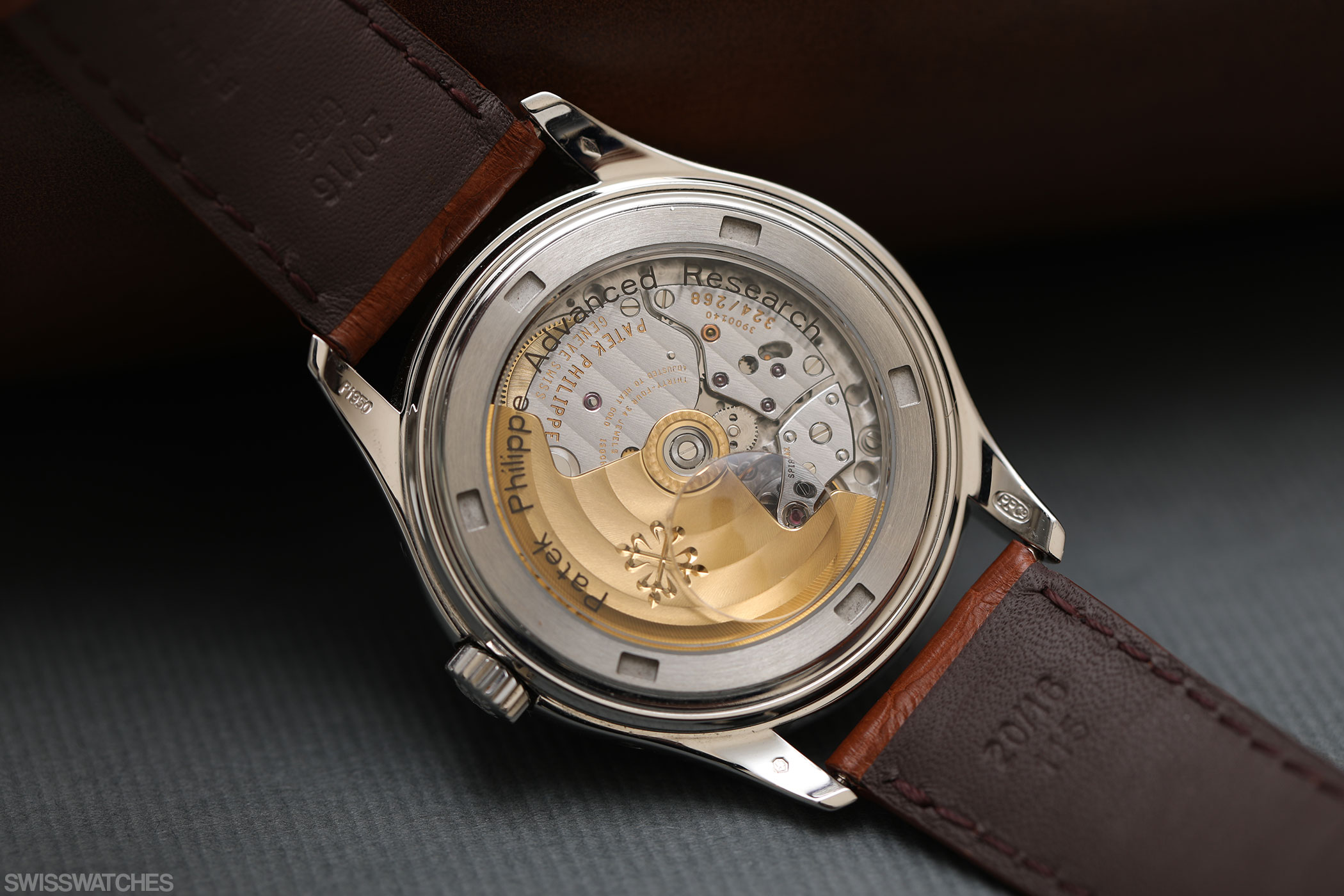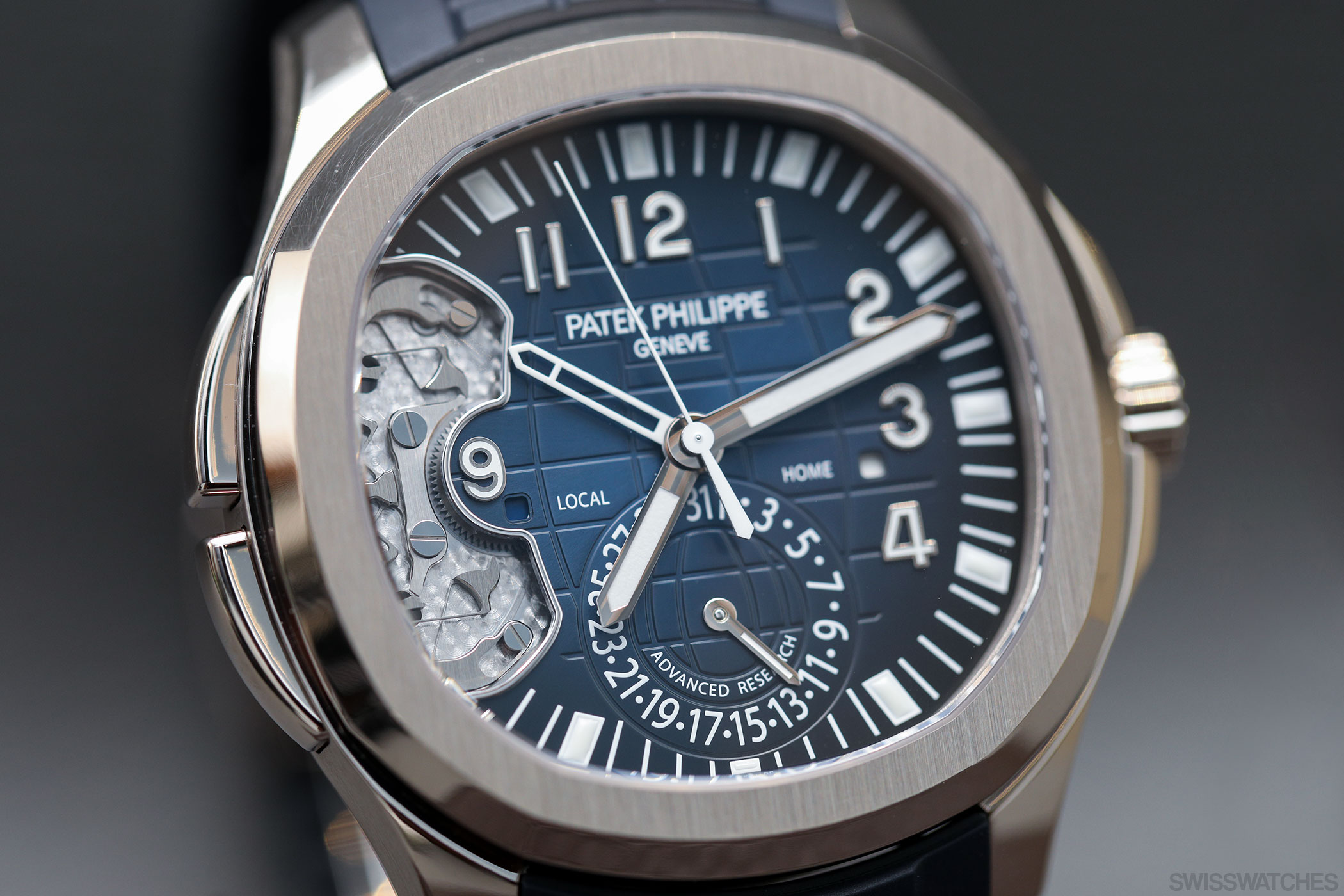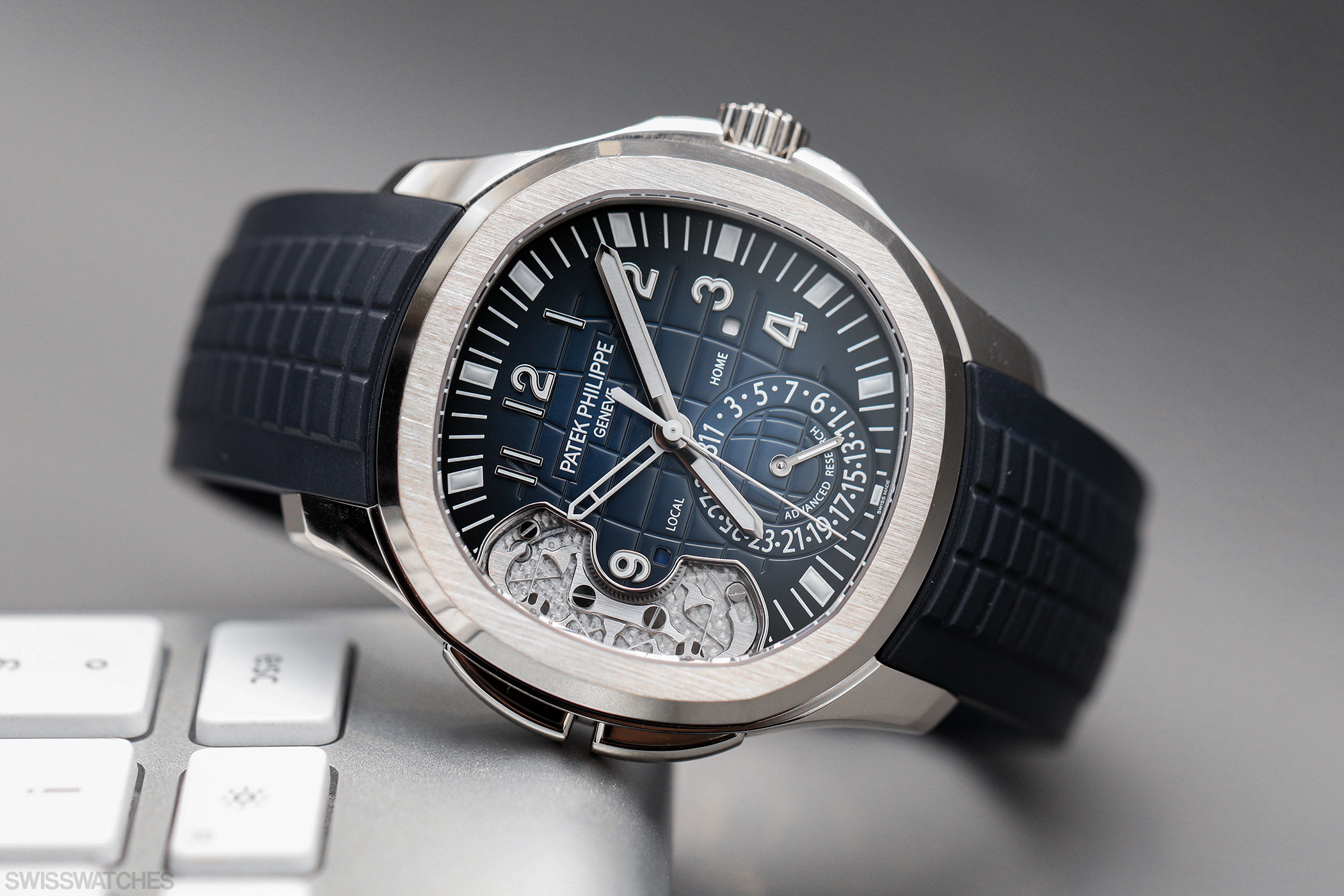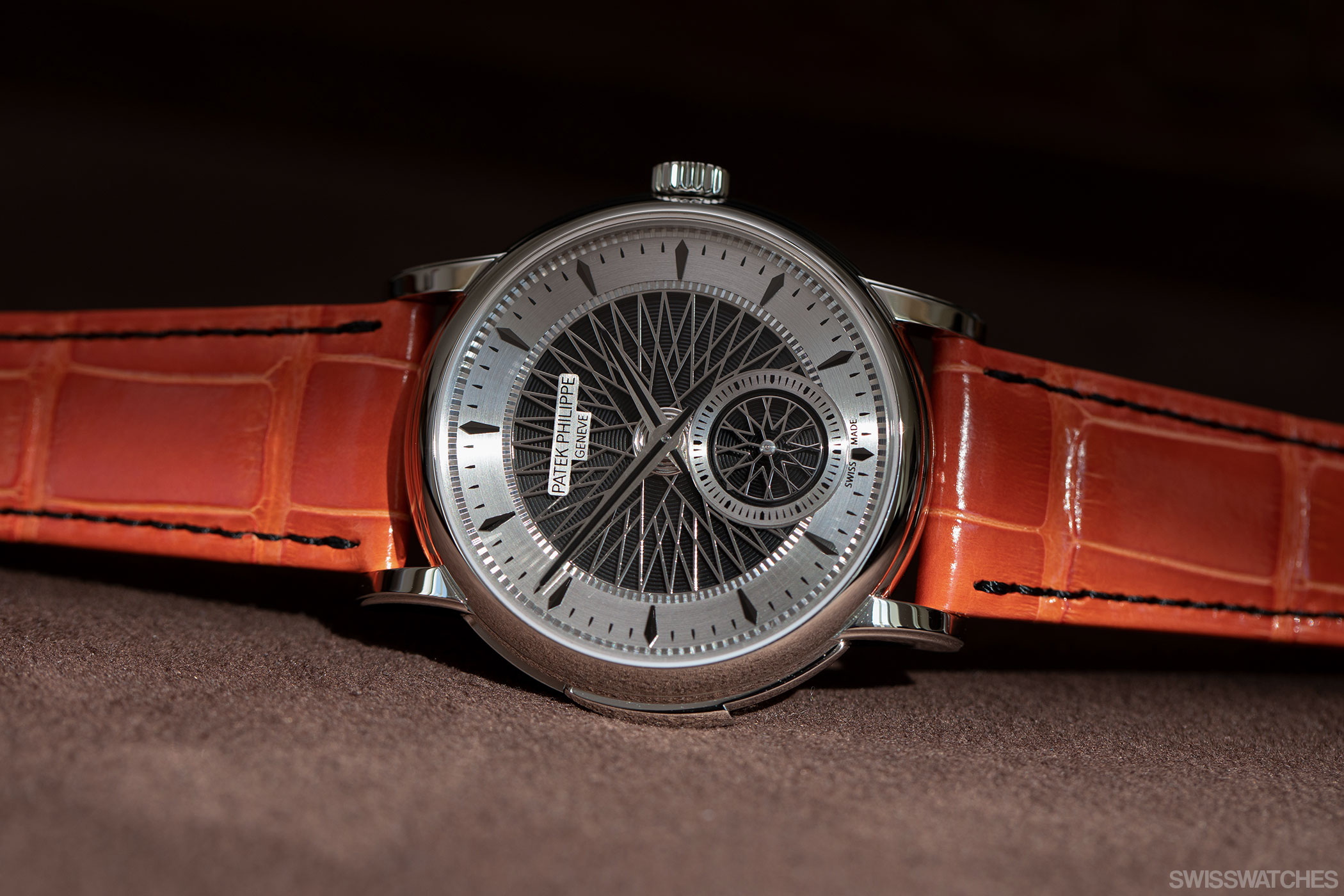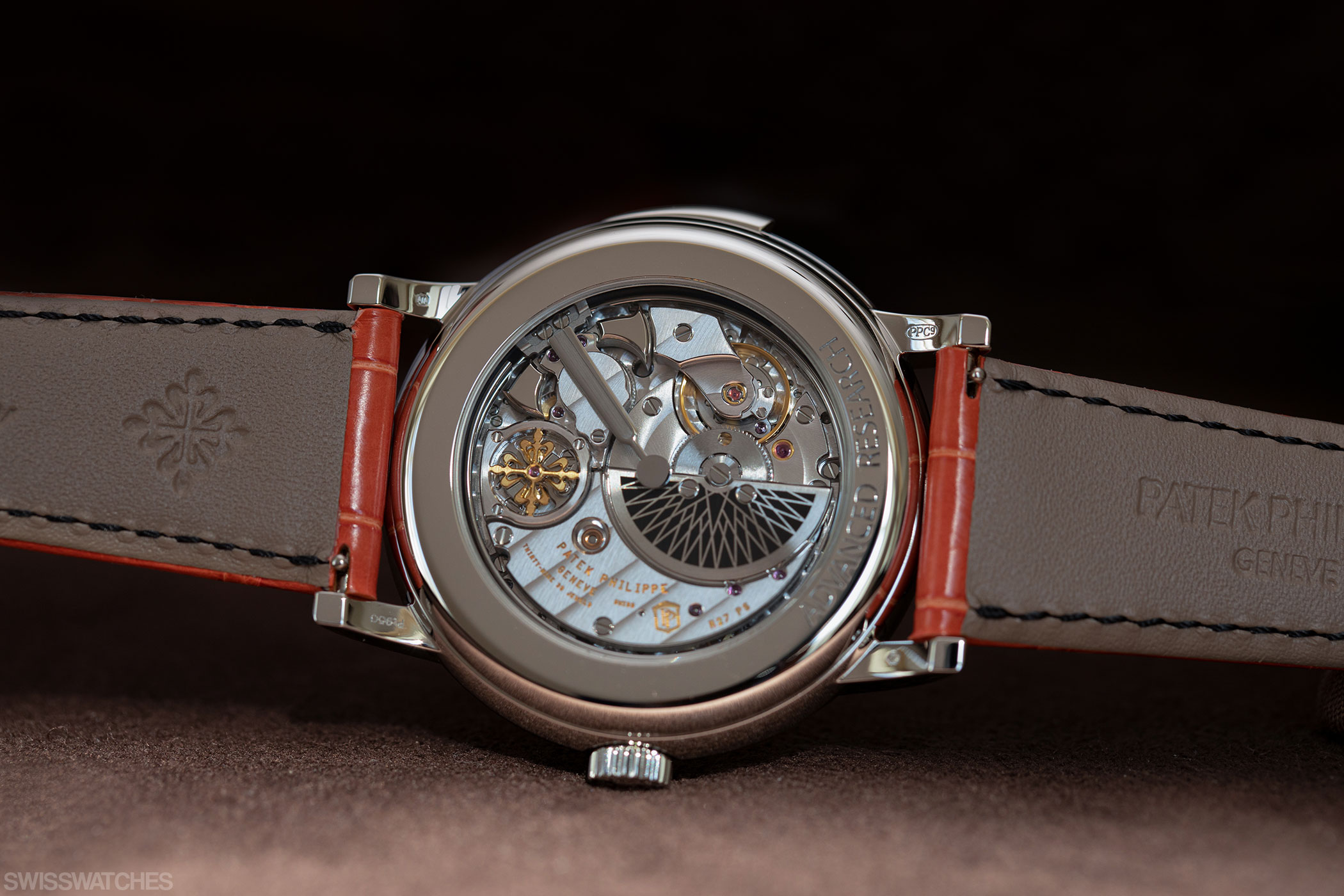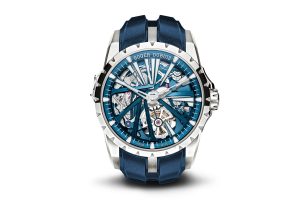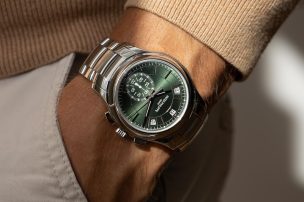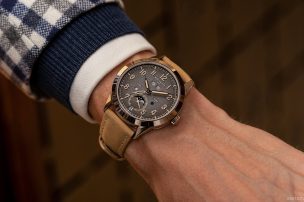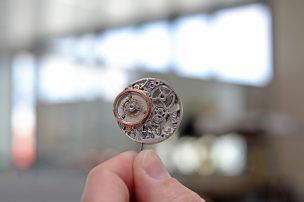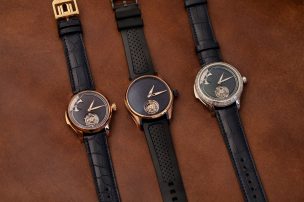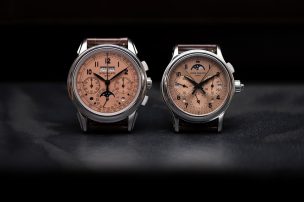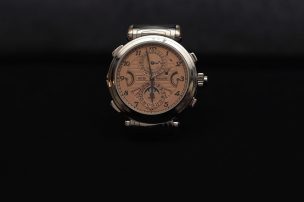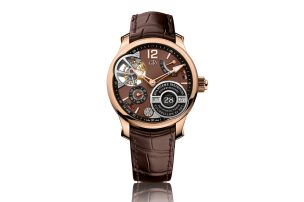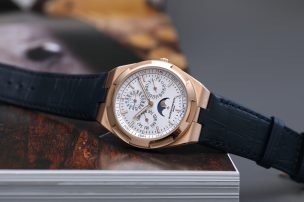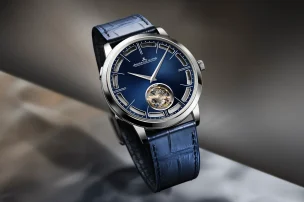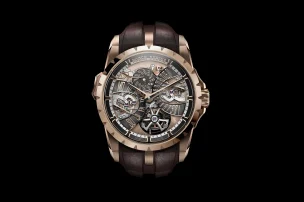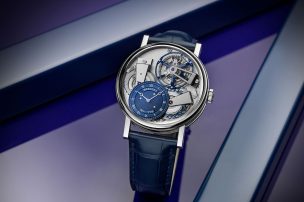
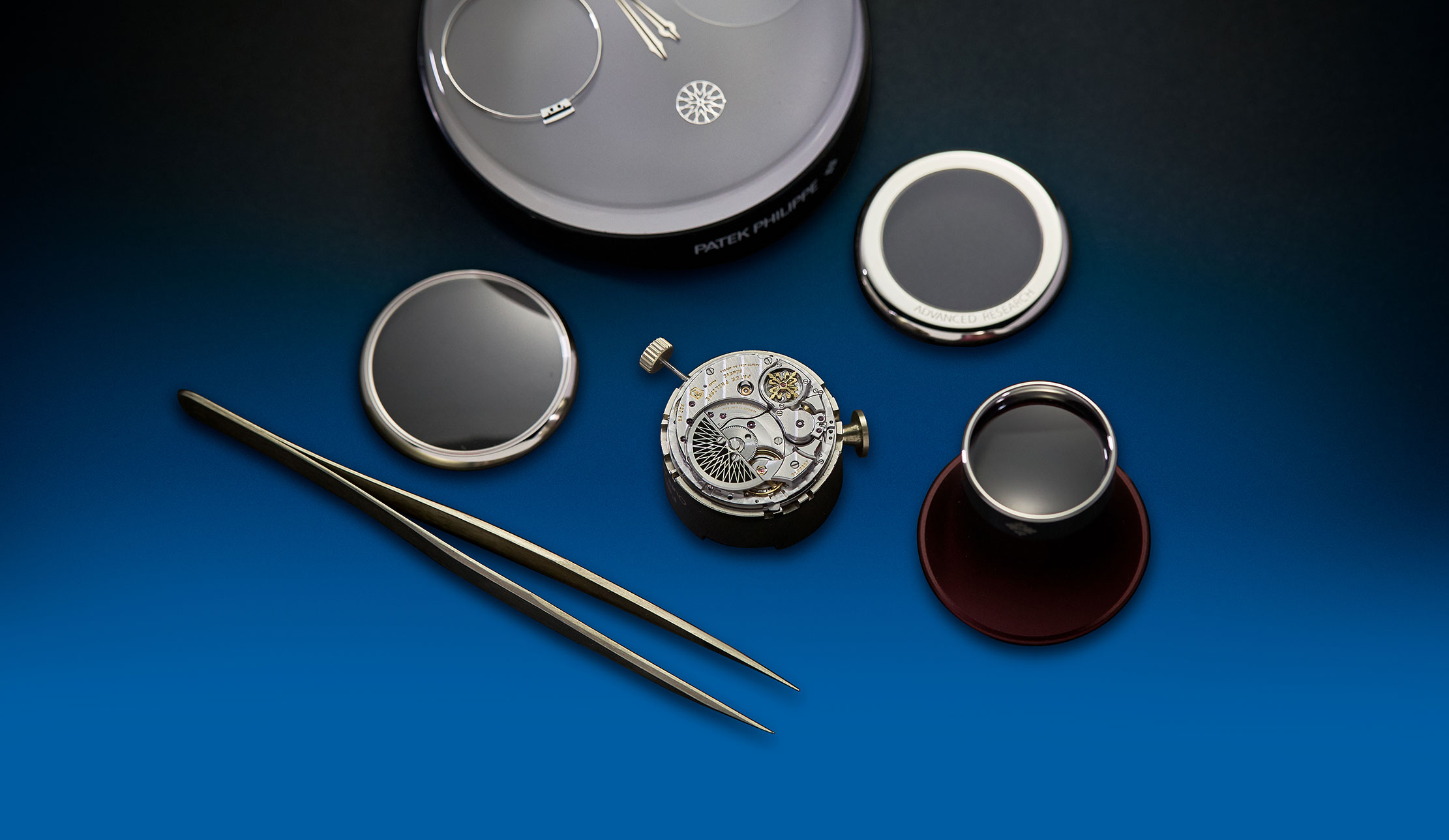
Pushing the Boundaries of Watchmaking: Patek Philippe Advanced Research
Looking closely at the remarkably innovative spirit of Patek Philippe, one comes to the conclusion that the slogan of the Geneva-based manufacture should be “Vorsprung durch Technik” (or in English, “Innovation through technology”), Audi’s catchy mantra. But the horology house’s slogan is rather: “You never own a Patek Philippe. You merely look after it for the next generation.” At first glance, this has something timeless and tradition-bound about it. Innovation, on the other hand, is fast-moving, constantly accelerating, and usually already yesterday’s news for the next generation.

Patek Philippe Manufacture in Geneva
However, Patek Philippe is making it crystal clear that tradition and innovation need not be two such contradicting terms with its project called “Advanced Research”. In this project, synergies are created between traditional watchmaking and research into new materials, new manufacturing technologies and new conceptual principles. The resulting creations are usually reserved for a small circle of watch enthusiasts. Nevertheless, their technologies and patents have fundamentally changed watchmaking.

Innovation through technology
There are many good reasons for buying a Patek Philippe. There are the ancient forms of craftmanship, such as hand guilloching or Geneva miniature painting, which are still executed by Patek to such perfection that there is scarcely room for improvement. The movements are not only finished down to the last detail, but also run far above the average Swiss chronometer in terms of precision. Since its foundation in 1839, the watchmaker has registered over 70 patents. At least 20 of these are considered ground-breaking in watchmaking. As early as 1845, Patek became the first to develop watches with a built-in winding mechanism. Then, in 1860, it produced the first watch with a winding and hand-setting device without requiring a separate key. By 1949, Patek had developed the Gyromax balance (patented in 1951), which allows fine adjustment without requiring the vulnerable traditional regulator mechanism. In 1962, Patek Philippe introduced the world’s first wristwatch with a perpetual calendar and automatic winding.
Silicon Silinvar escape wheel, pallet fork and balance spring (left), Spiromax balance made of Silinvar (right)
Credit © Patrick Möckesch
One area in which the Geneva-based manufacture is well and truly committed, though, is the field of world time complications and repeaters. By as early as 1937, Patek Philippe had produced the first World Time wristwatch Ref. 515 HU together with Louis Cottier. In 2000, Patek developed a mechanism that allows for the setting of 24 cities and time zones, as well as World Time, using a single pusher. There’s something else, too: anyone who has ever listened to the sound of a Patek Philippe repeater watch will remember it like music ringing in their ears. To ensure that this enchanting experience remains the case with every single striking movement watch, Patek Philippe CEO, Thierry Stern, personally checks every repeater before it leaves the manufacture.

Clearly pleased with the sound of his Grandes Complication Ref. 5208 – Patek Philippe CEO Thierry Stern.
Credit © Studio Schöttger
Advanced Research
In 2005, Patek Philippe launched its ambitious Advanced Research project. This title refers to a newly created research and development department that deals exclusively with new technologies and materials. In creating Advanced Research, the company departed from the realms of conventional watchmaking and enlisted reinforcements from outside: physicists, engineers, microtechnicians, and even acousticians, whose task is to further improve the sound of its repeater watches, question conventional mechanisms of traditional watchmaking, and find innovative solutions for improvement. Mechanical watchmaking is always about further improving the accuracy and efficiency of the movement.
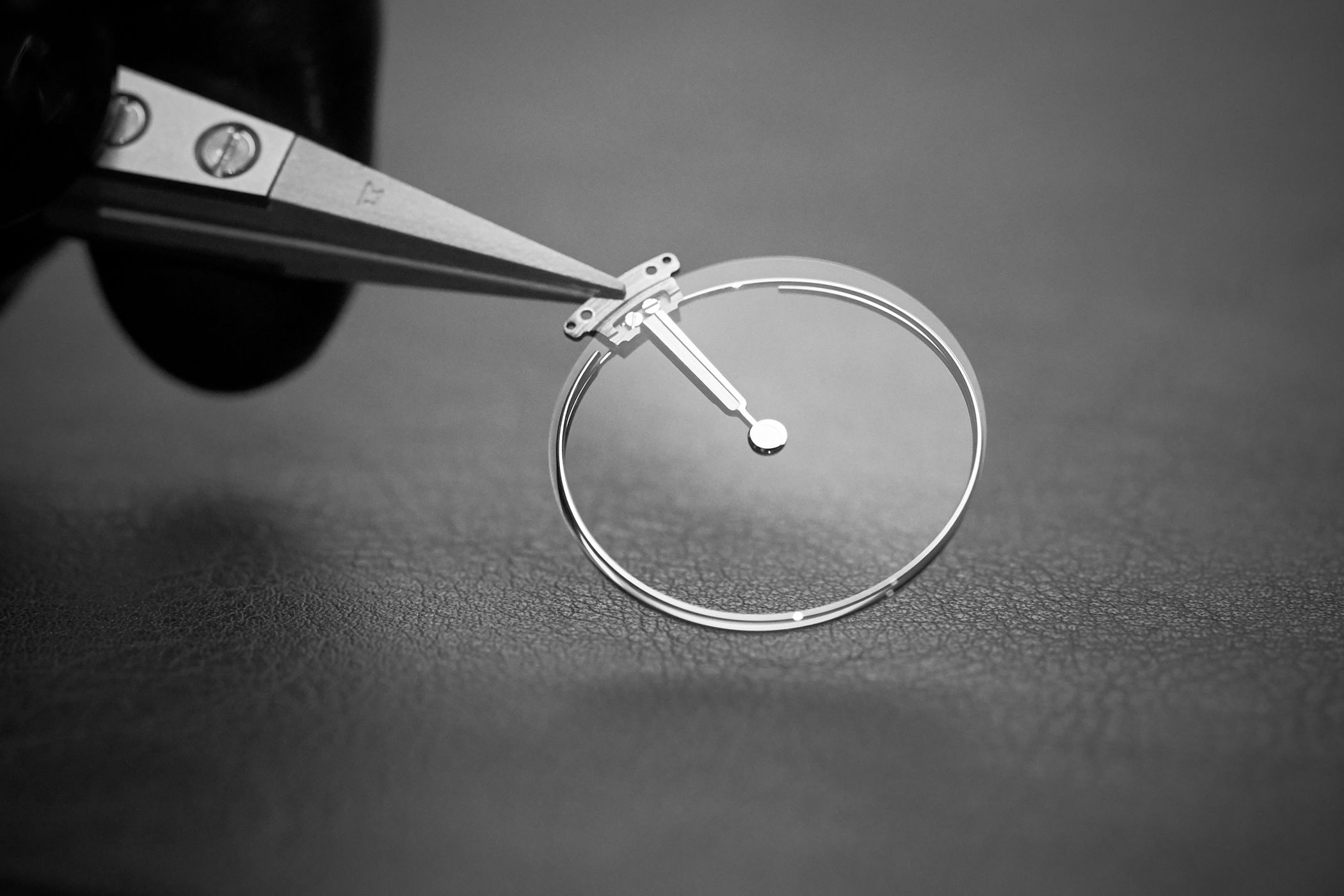
The approximately 160 employees of Patek’s Advanced Research department work closely with experts from external research institutes, such as the Swiss Federal Institute of Technology in Lausanne, the Institute of Microtechnology at the University of Neuchâtel IMT, the Swiss Centre for Electronics and Microtechnology CSEM, and COMLAB (the joint laboratory of ITM and CSEM). Patek also maintains partnerships with educational and research institutions, including the School of Engineering for the Swiss Jura (Ecole Ingénieurs de l’Arc Jurassien), and the Geneva School of Engineering (Ecole Ingenieurs à Genève) – particularly its acoustics department.
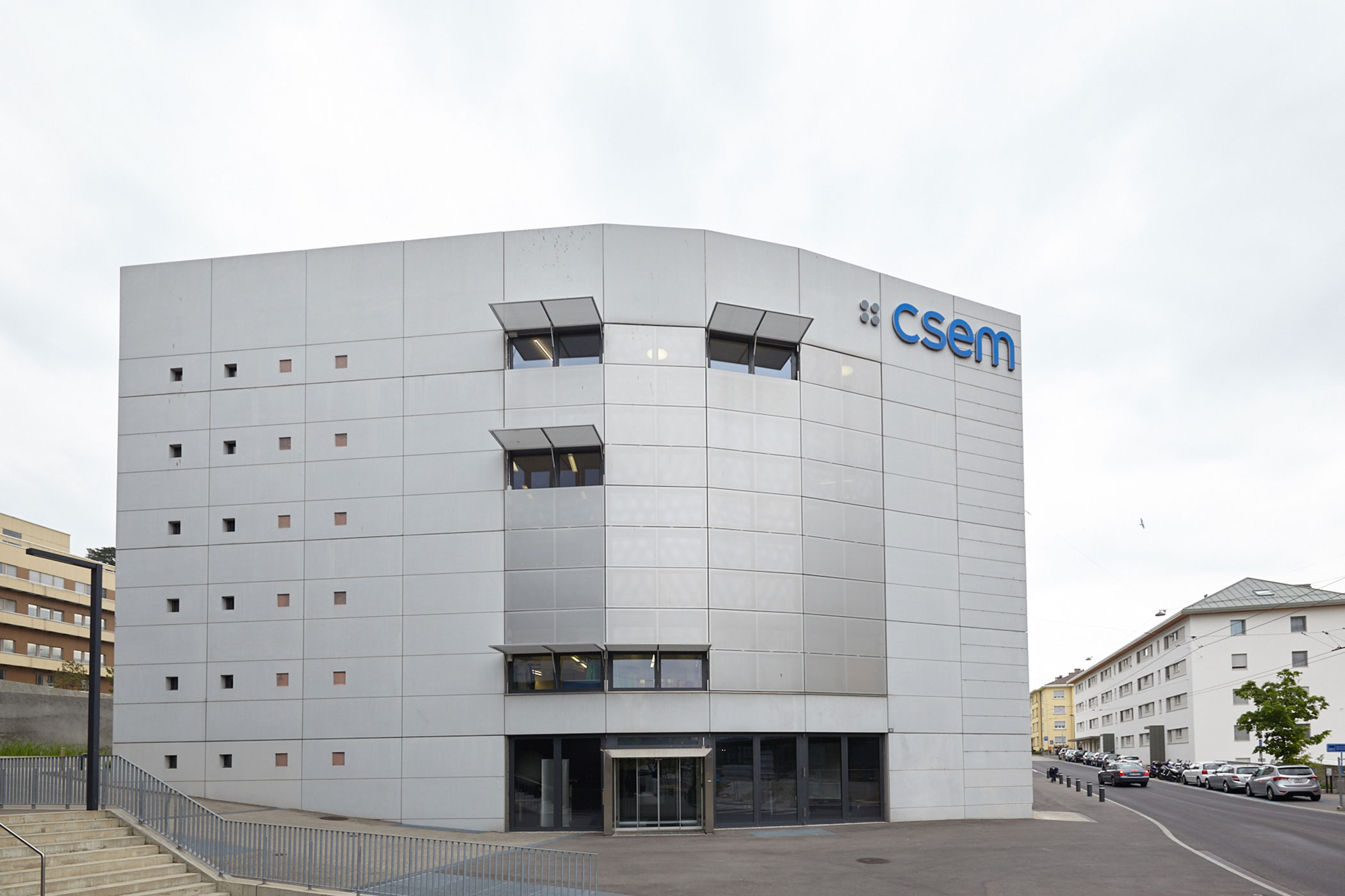
The Swiss Center for Electronics and Microtechnology – CSEM
Credit © Patrick Möckesch
What is researched, experimented with, and finally patented in the department over a number of years is initially circulated in strictly limited special editions. Only trusted, loyal and long-standing Patek collectors can acquire these pieces. Some of the new technologies then later find their way into the primary collections, e.g. the new Calatrava pieces that are equipped with next-generation hairsprings and balance wheels.
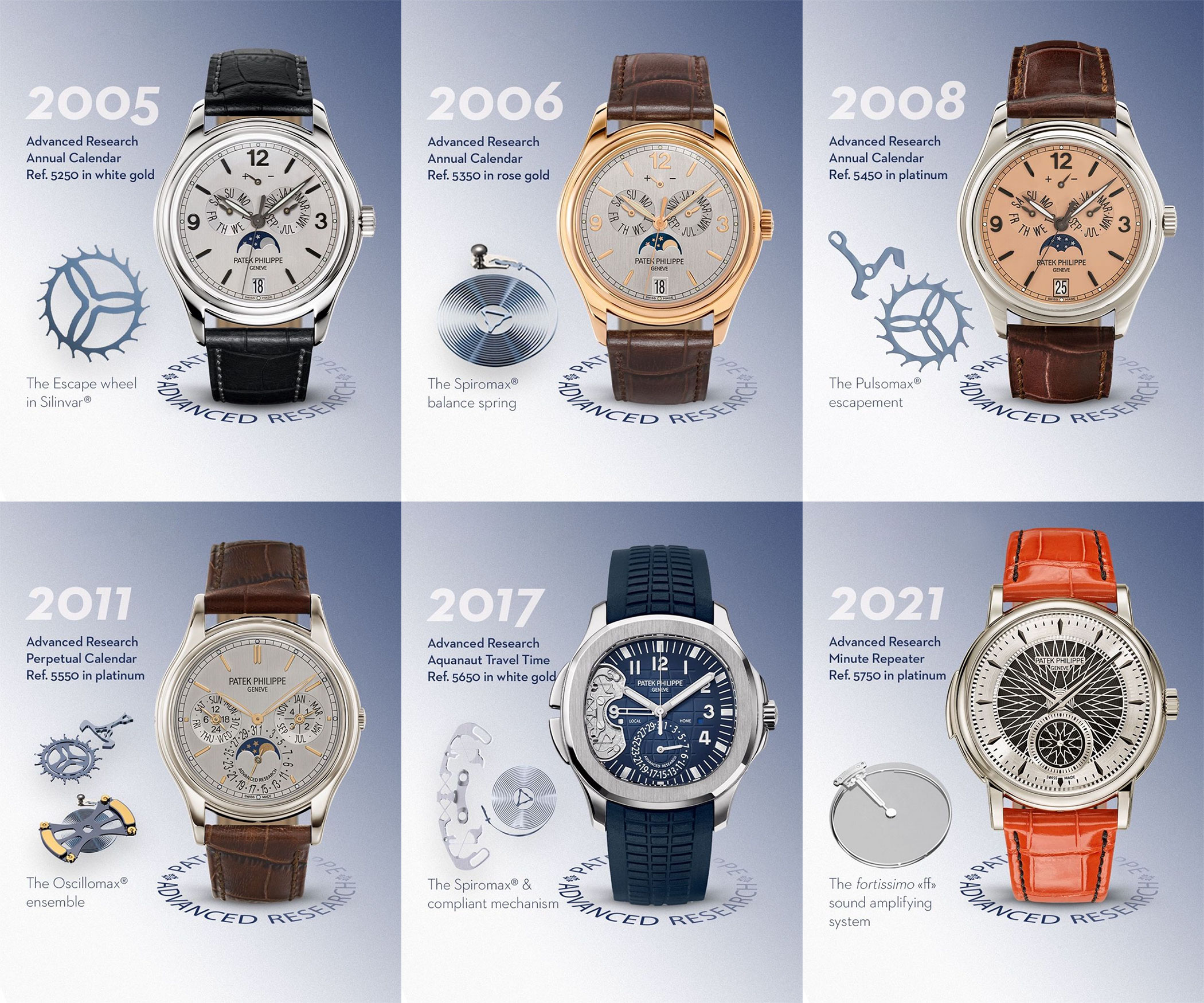
The Patek Philippe Advanced Research projects and innovations – an overview
2005
Patek Philippe Advanced Research Annual Calendar Ref. 5250
(Limited to 100 pieces)
After several years of research and development, Patek Philippe finally unveiled the first result of its Advanced Research programme in 2005. Limited to just 100 pieces, the Patek Philippe Advanced Research Annual Calendar Reference 5250 featured, for the first time, an escape wheel made of silicon, which Patek named Silinvar because of the material’s properties. This was because pure silicon was too fragile to be suitable for use in watchmaking. Silinvar (silicon and invariable) is produced using a vacuum oxidation process and is significantly more robust than pure silicon. We’ll come back to this later.
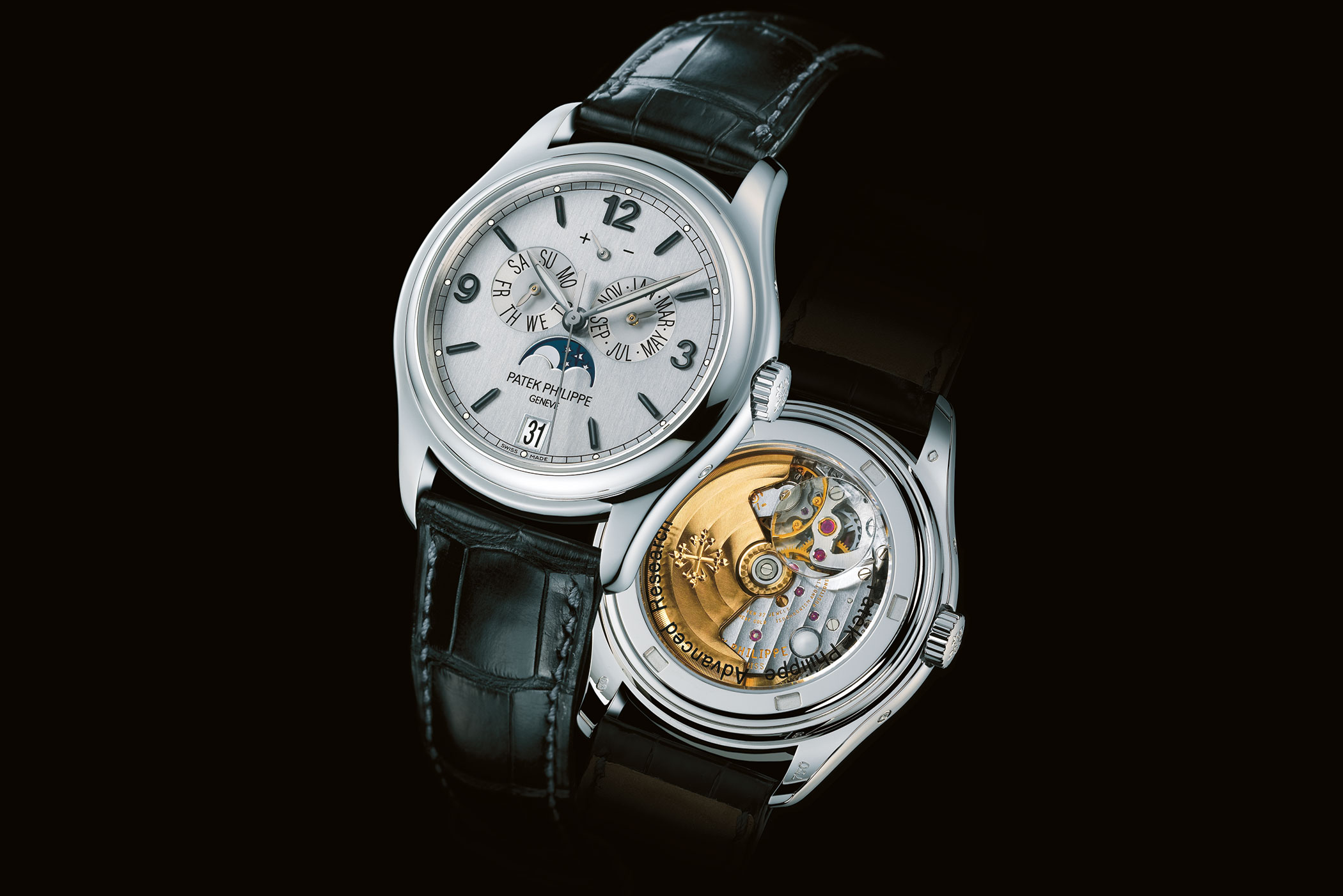
Advanced Research Annual Calendar Ref. 5250
Firstly, though, why is it worth optimizing the escape wheel of a mechanical watch at all? At a common balance frequency of 4 Hz (28,800 vibrations per hour), the escape wheel is stopped and accelerated again six to eight times per second. So, about 691,200 times per day, making for 252 million times per year. This also means a lot of wear and permanent susceptibility to external influences such as temperature fluctuations, magnetic fields, or moisture. The manufacturing of a steel escape wheel, when following the strict Geneva Seal criteria, involves 30 different steps. In the escapement mechanism of a classic Swiss wristwatch, around 65% of the energy is lost just for acceleration. The lower the mass of the escape wheel, the more energy can be transferred to the balance.
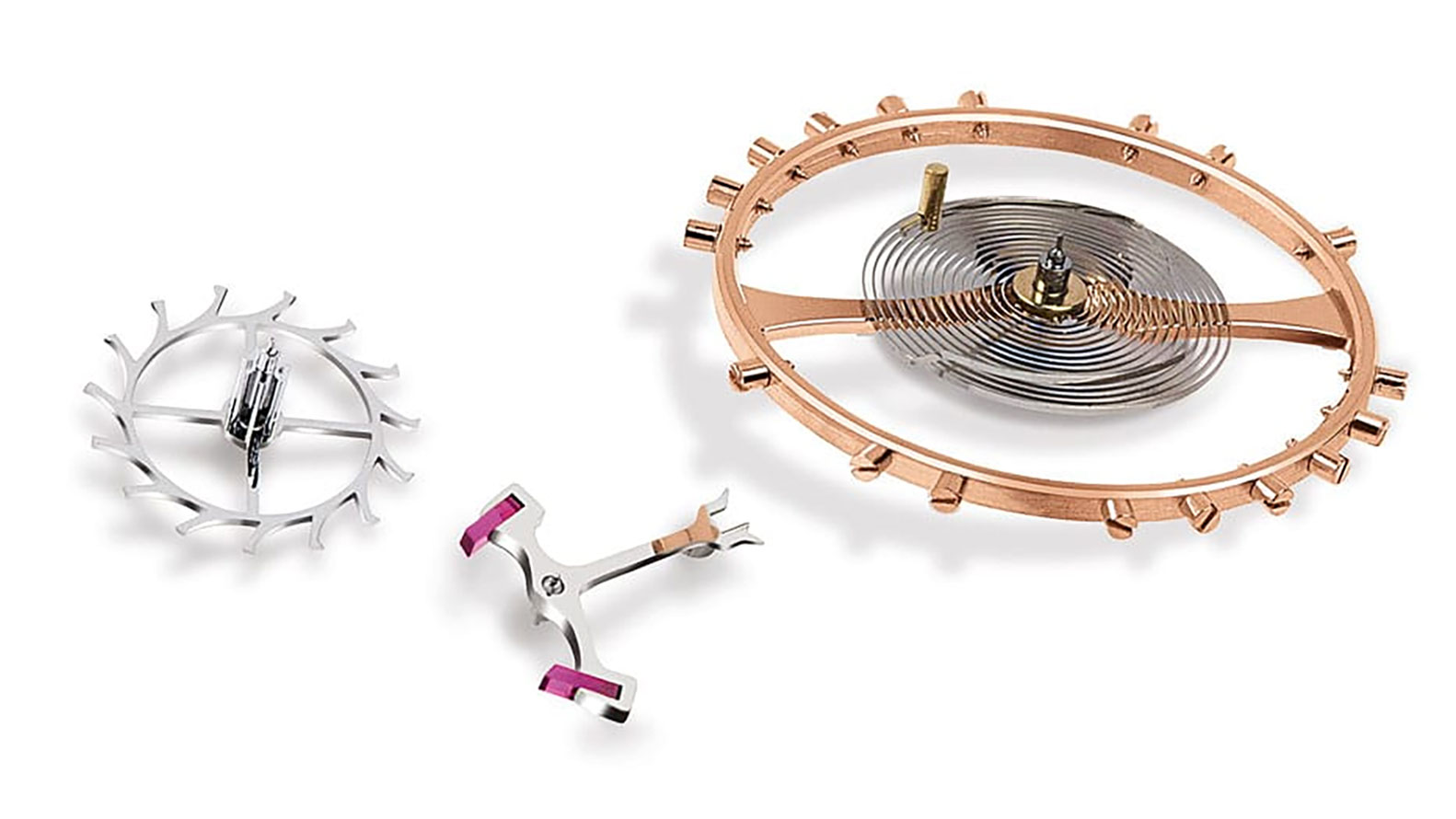
From left to right:
A classic steel escape wheel, pallet fork with pallets and balance wheel with Breguet hairspring.
Credit © 2007 Sandro Campardo Photographe RP CH-2002 Neuchatel
Patek’s silicon Silinvar escape wheel, on the other hand, is light (density of silicon: 2.33 g/cm3 to 8 g/cm3 of steel), hard (1100 Vickers to 700 Vickers of steel), anti-magnetic, and corrosion resistant. Manufacturing using the high precision DRIE method (Deep Reactive Ion Etching) requires only a single working process. This makes it more dimensionally accurate than any steel wheel. The Silinvar escape wheel has an absolutely smooth surface, which does not need to be lubricated and thus does not wear down over time.
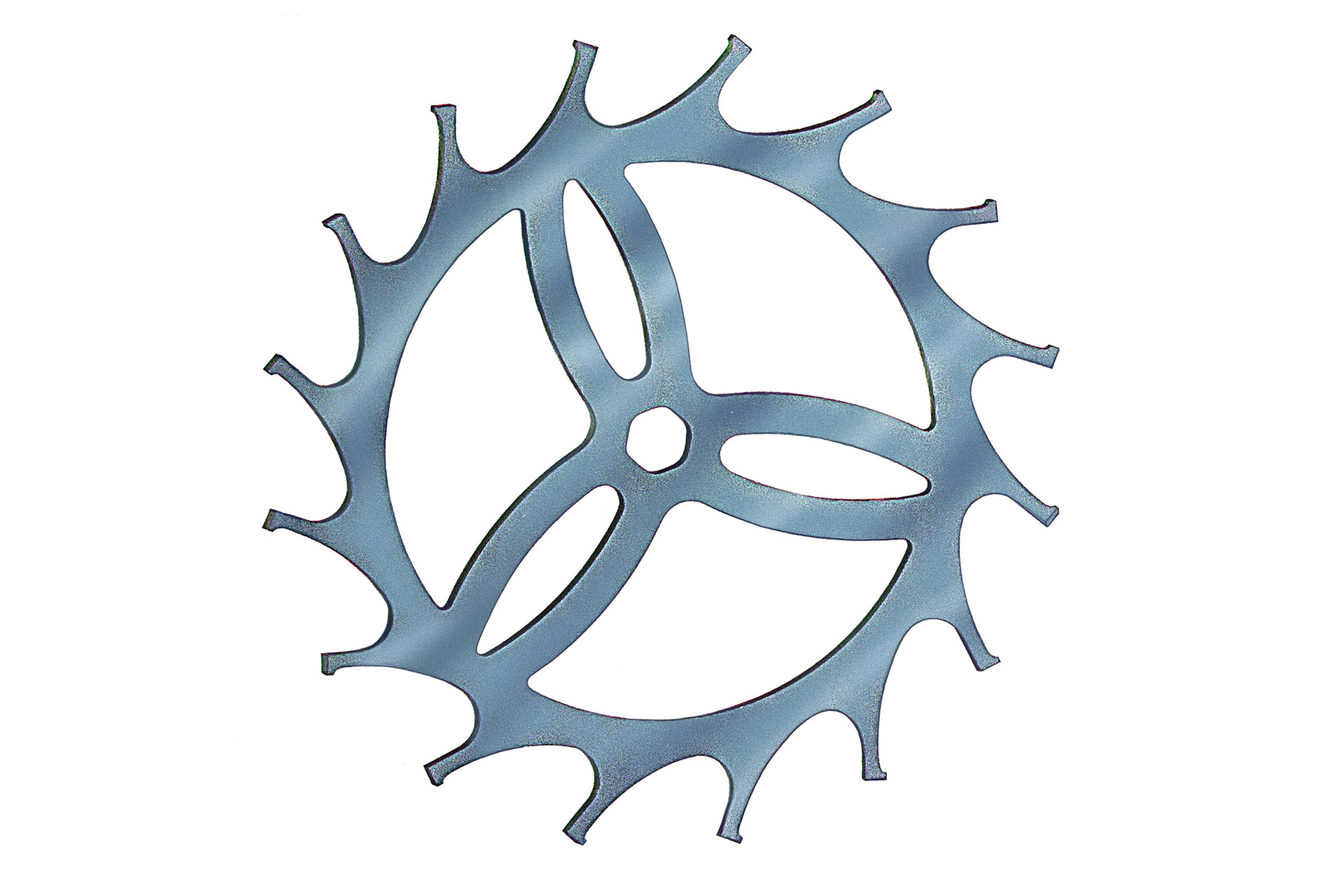

Patek Philippe silicon Silinvar escape wheel
But what are the advantages of the DRIE manufacturing process? This deep etching technique makes it possible to manufacture watch movement components from monocrystalline silicon (aka Silinvar). Interestingly, the process actually originates from the microchip industry. In this process, the silicon cylinders are cut into thin slices (so-called wafers), into which the fine conductor structures are then etched using the common RIE process (Reactive Ion Etching). With the RIE process, it is possible to work down to a depth of a few micrometres. However, with the new DRIE technique, it becomes possible to produce components up to several hundred micrometres thick, which is necessary for the production of watch movement components. Approximately 250 escape wheels can be obtained from the surface of a 100 mm so-called wafer, which are ready for use except for a final surface cleaning. In other words, they do not require any time-consuming finishing operations such as balancing, centring, chamfering, or polishing.
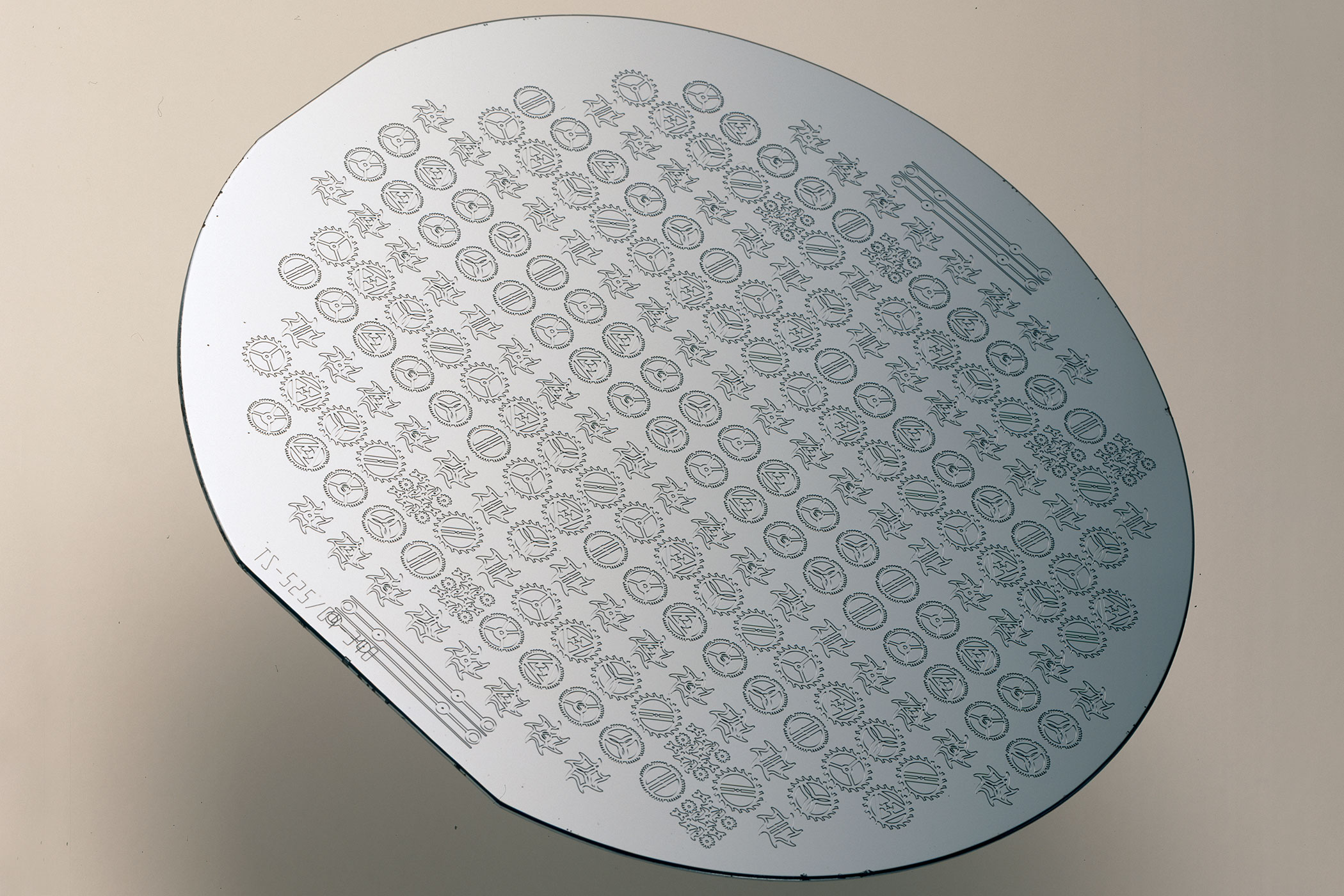
Silicon Silinvar Wafer
Patek Philippe’s Silinvar silicon escape wheel was produced in collaboration with the Institute of Microtechnology at the University of Neuchâtel. However, Patek is not the only watchmaker to make use of Silinvar silicon. This is because Silinvar was originally developed in close collaboration with Rolex, the Swatch Group and CSEM. Accordingly, Silinvar components can also be found in their watches, too.
The 2005 Patek Philippe Annual Calendar Ref. 5250 Advanced Research appeared in an 18-carat white-gold case with a silvered sunburst dial, alongside black/blue indices and hands. The gear train bridge was specially milled out, while the sapphire crystal caseback was fitted with a magnifying glass to give its wearer an unobstructed view of the new escape wheel, shimmering blue in the light.
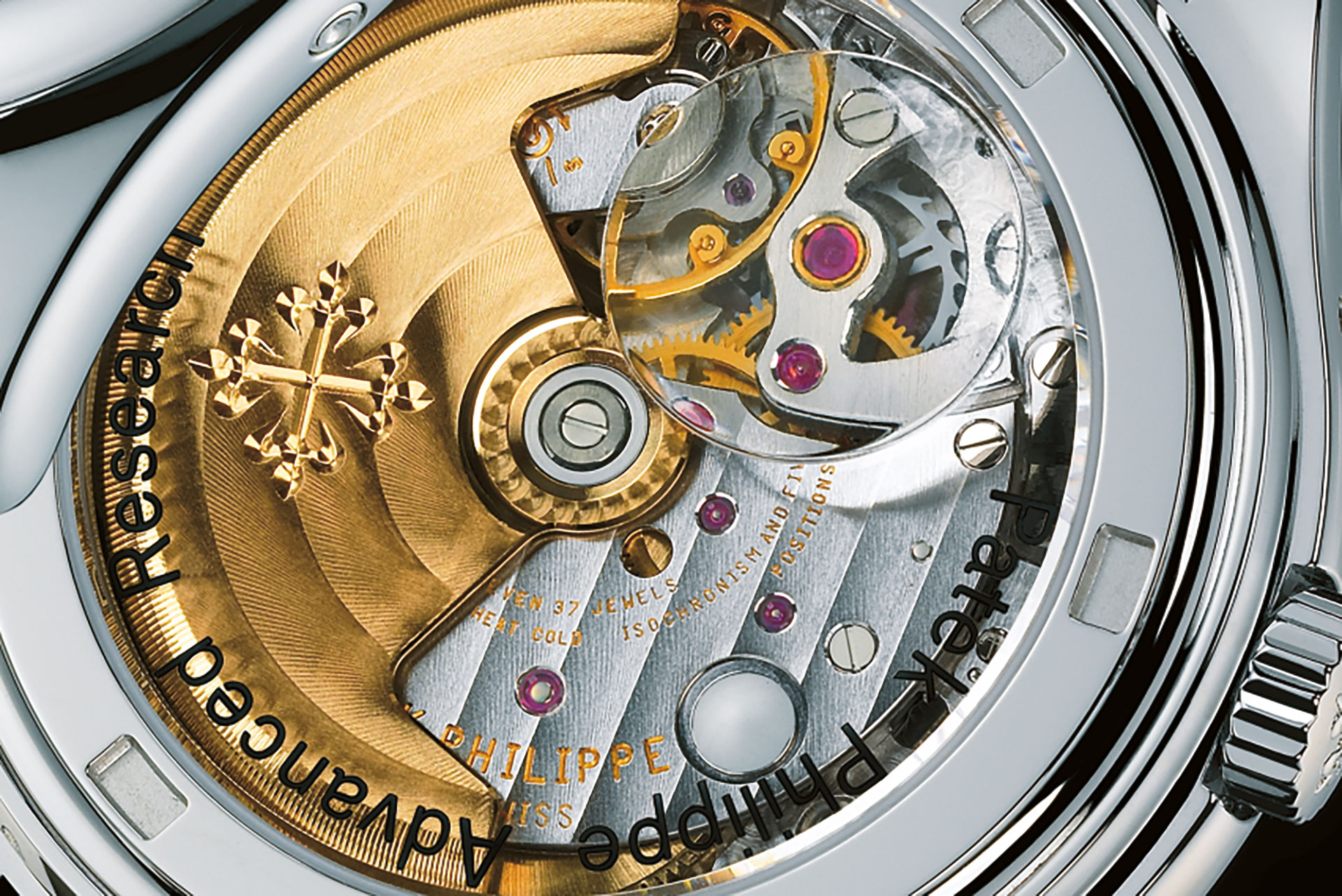
2006
Patek Philippe Advanced Research Annual Calendar Ref. 5350
(Limited to 300 pieces)
The balance spring is another highly sensitive component of the movement that determines how precisely a watch ticks. If the regulating organ (pendulum in grandfather clocks, balance wheel in pocket watches/wristwatches) oscillates evenly, it is known in technical jargon as an “isochron”, from the Greek “equal in time”.
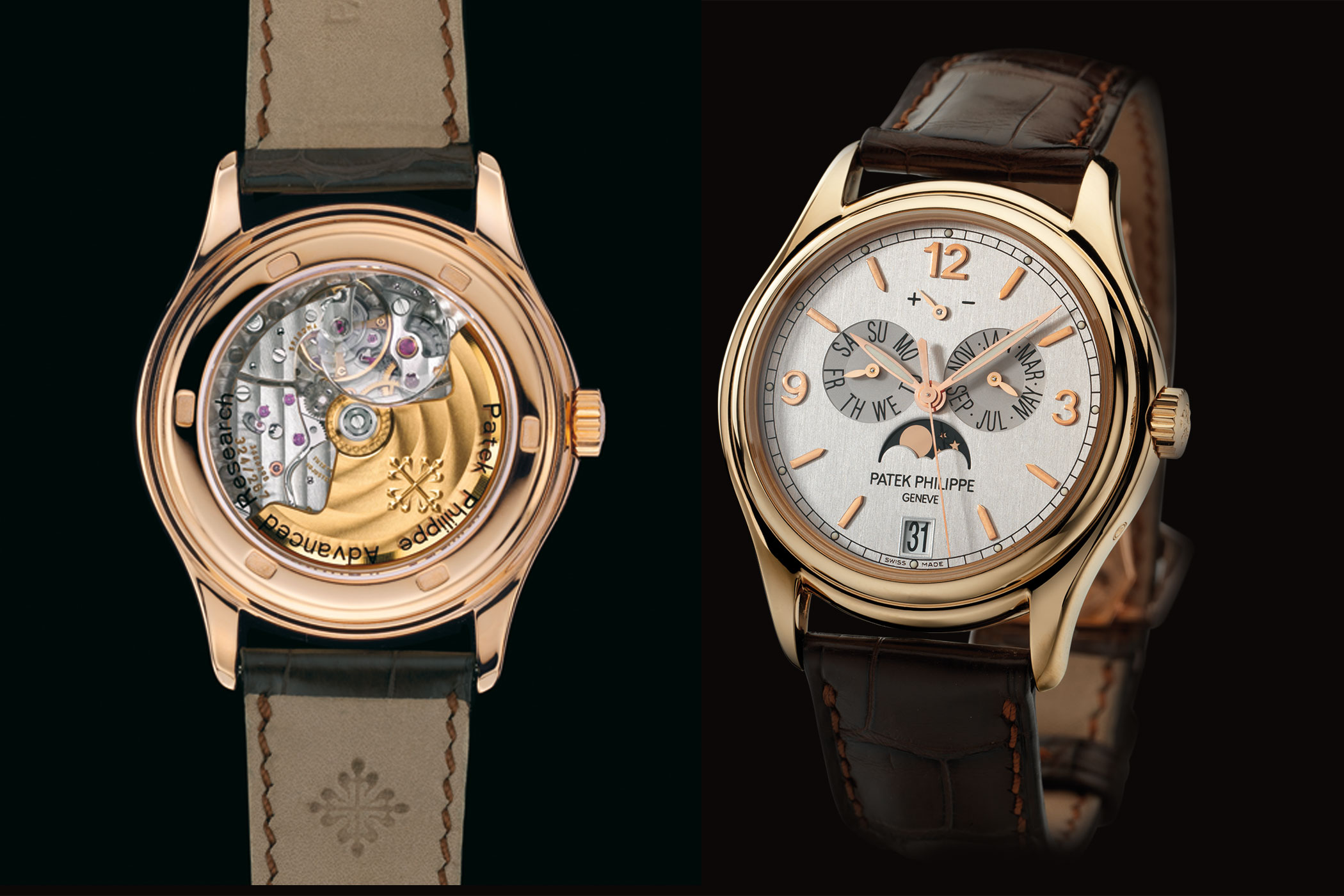
Advanced Research Annual Calendar Reference 5350
A short historical detour
The watchmaker Christian Huygens invented the balance spring as early as 1675: A.-L. Breguet finally invented the Breguet hairspring with a Phillips curve in 1795. Breguet had discovered that the isochronism fault of an escapement, caused by deviation in the oscillation amplitude of the balance, could be reduced by bending the outer end of the hairspring toward the centre, hence the term ‘end curve’. Mathematician Eduard Phillips tried to scientifically prove the advantage of the Breguet hairspring with end curve a few decades later – hence that name. It was believed that the optimal length of the hairspring had a significant impact on the watch’s regulating ability. Once this length is found, it must not be changed and should oscillate as concentrically (symmetrically) as possible.

Parachrom Breguet hairspring with end curve by Rolex
Fotocredit © Rolex
However, common balance springs made of metal are quite susceptible to temperature fluctuations, magnetic fields, and the influence of gravity. All these disturbing factors change the nature and elasticity of the hairspring and thus the accuracy of the rate. In 1897, the Swiss physicist Charles Edouard Guillaume invented a special iron-nickel alloy, which defied temperature fluctuations due to the material. He called it INVAR (invariable).
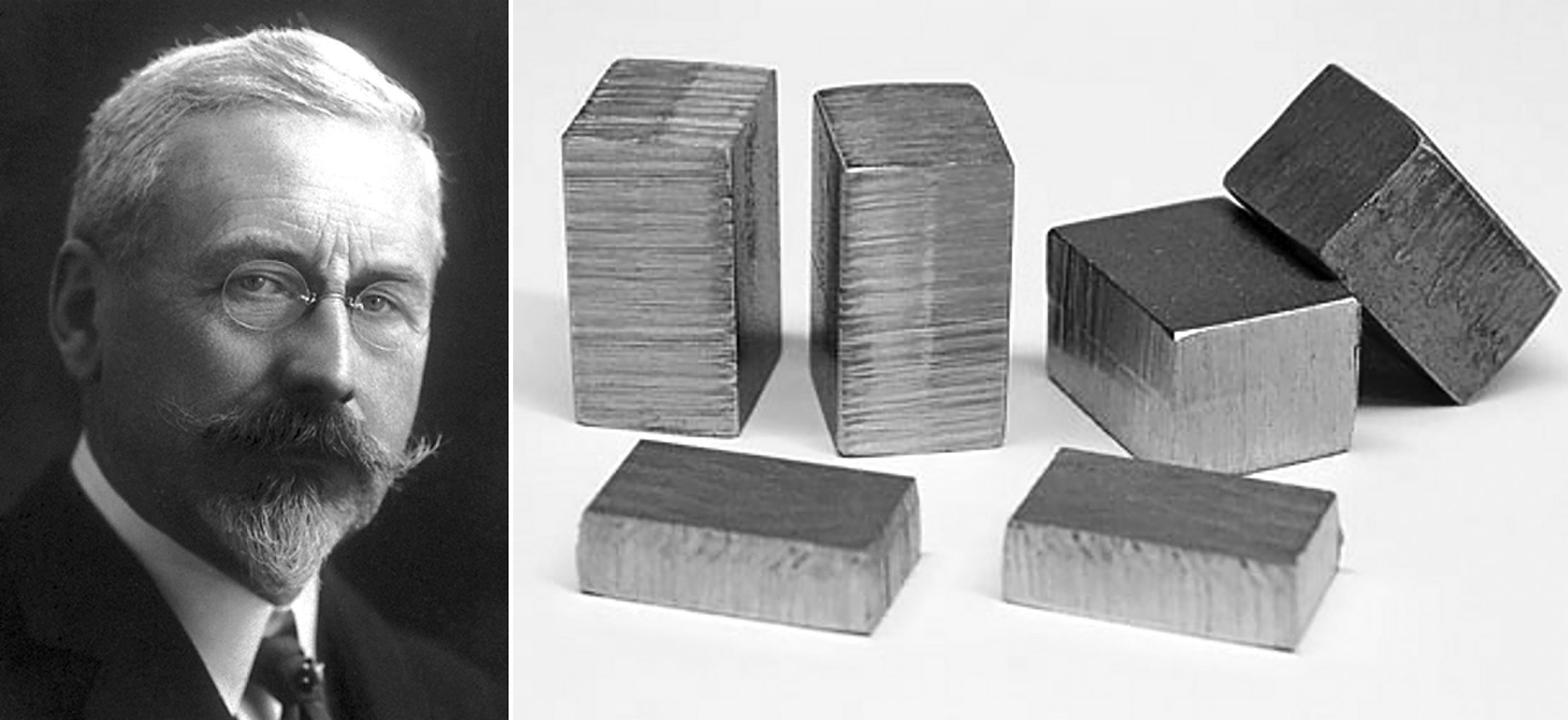
Swiss physicist Charles Edouard Guillaume invented a special iron-nickel alloy: INVAR
The Spiromax balance spring from Patek Philippe
In 2006, Patek Philippe introduced the Spiromax balance spring, which is again made of Silinvar. The silicon-based material means that the hairspring – like Guillaume’s INVAR hairspring – is no longer susceptible to temperature fluctuations. The greatest advantage, however, is that wear and tear can be virtually ruled out, since silicon Silinvar does not change shape. In this respect, it can be optimally adjusted in advance and does not need to be regulated over time after completion. With common spirals, it works exactly the other way around. They are first fixed in the factory, then fine-tuned. However, it is not only the material that contributes decisively to the improvement, but also the new geometry of the end curve. The new Patek Philippe end curve has a thickening at the outer end. It helps to ensure that the swinging in and out of the Spiromax hairspring is symmetrical to the centre on all sides of the oscillation plane.
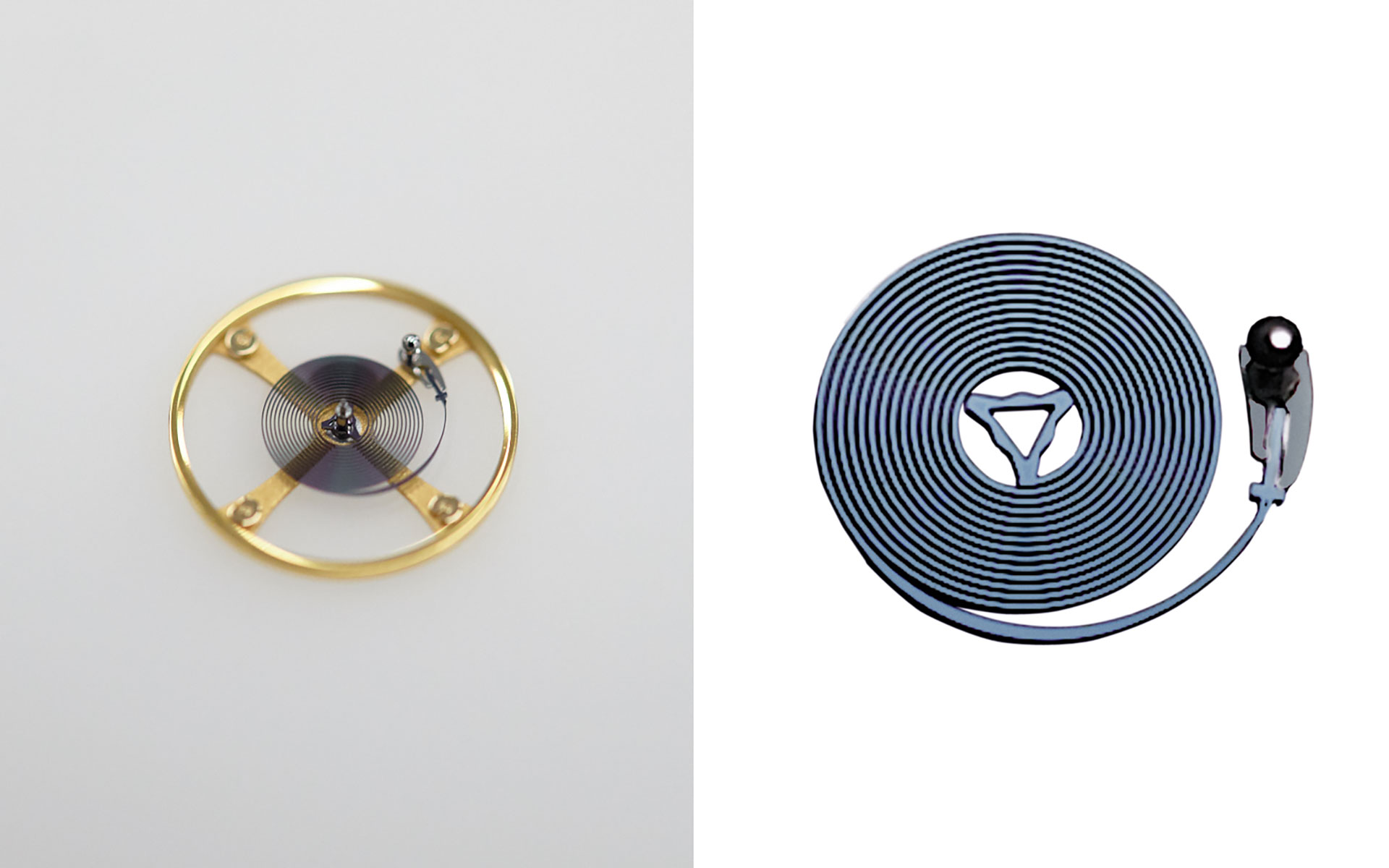
Spiromax balance spring with Patek Philippe end curve
Fotocredit © Patrick Möckesch
Because the new Patek end curve lies within the swing plane of the Spiromax hairspring, it is three times flatter than a hairspring with a bent-up end curve. For comparison, a conventional INVAR spiral with Phillips end curve is approximately 0.40 mm high. A conventional INVAR flat spiral is approximately 0.30 mm and the Spiromax spiral is only 0.12 mm.
2008
Patek Philippe Advanced Research Annual Calendar Ref. 5450 in Platinum
(Limited to 300 pieces)
The properties of Silinvar silicon possessed such advantages that Patek continued to equip ever more components of the oscillating and escapement system with the material. In 2008, Patek presented its first escapement developed entirely in-house, christening it Pulsomax. In addition to the escape wheel introduced in 2005, the pallet fork is now also made of Silinvar and both components (Pulsomax) were then combined with the Spiromax hairspring introduced back in 2006.
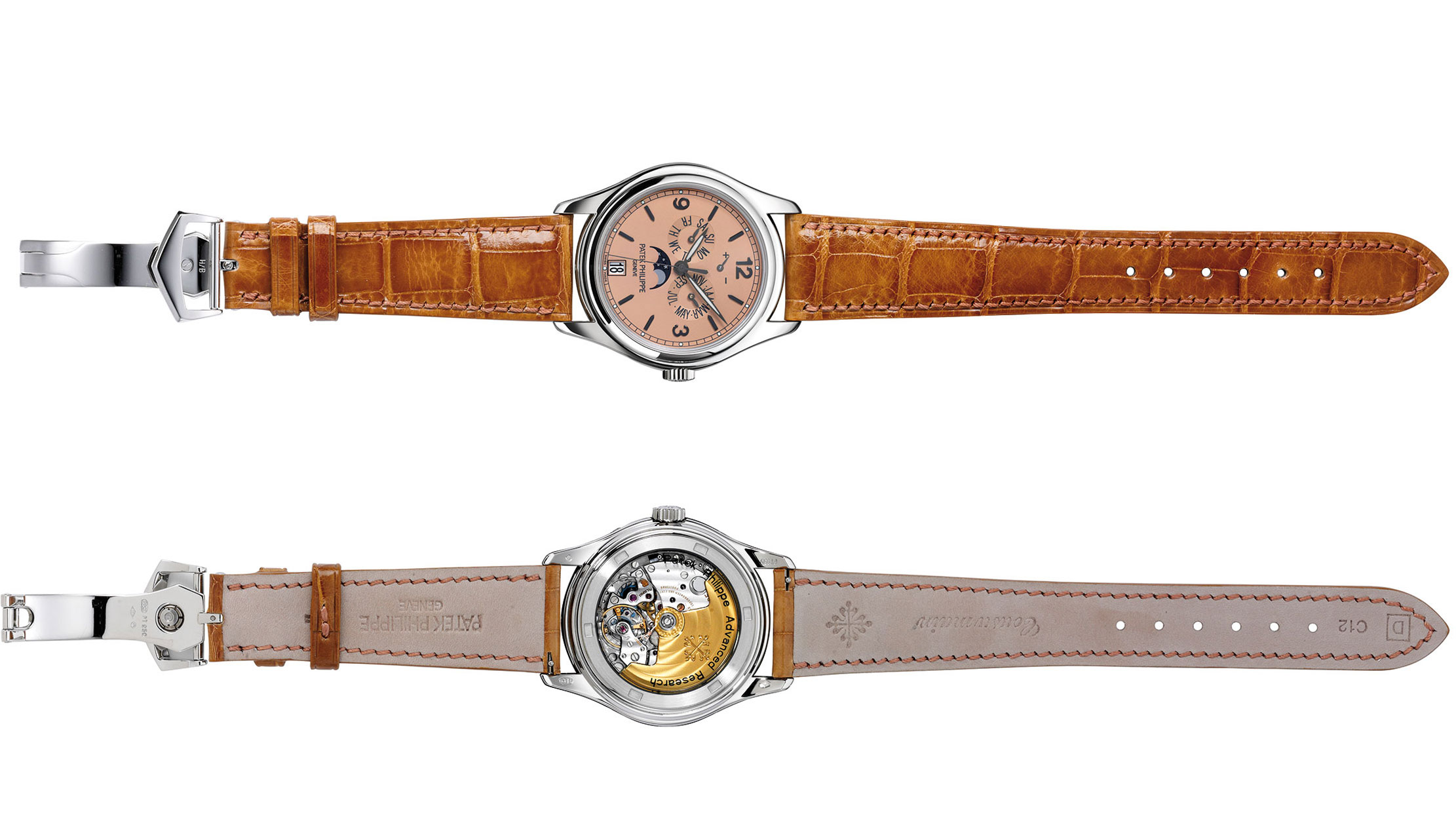
Advanced Research Annual Calendar Ref. 5450 in Platinum
The new pallet fork
Watchmaking is also always about saving as many components as possible. The fewer the parts, the fewer the sources that need maintenance or can wear out, thus affecting accuracy. The high-precision DRIE manufacturing process etches the pallet fork and escape wheel from a single piece. The new Silinvar framework no longer requires a ruby pallet fork to engage the escape wheel. Aside from eliminating the need to manufacture ruby pallet forks, there is also no longer a need for grinding, enamelling (gluing), or complex adjustment of the ruby pallets.
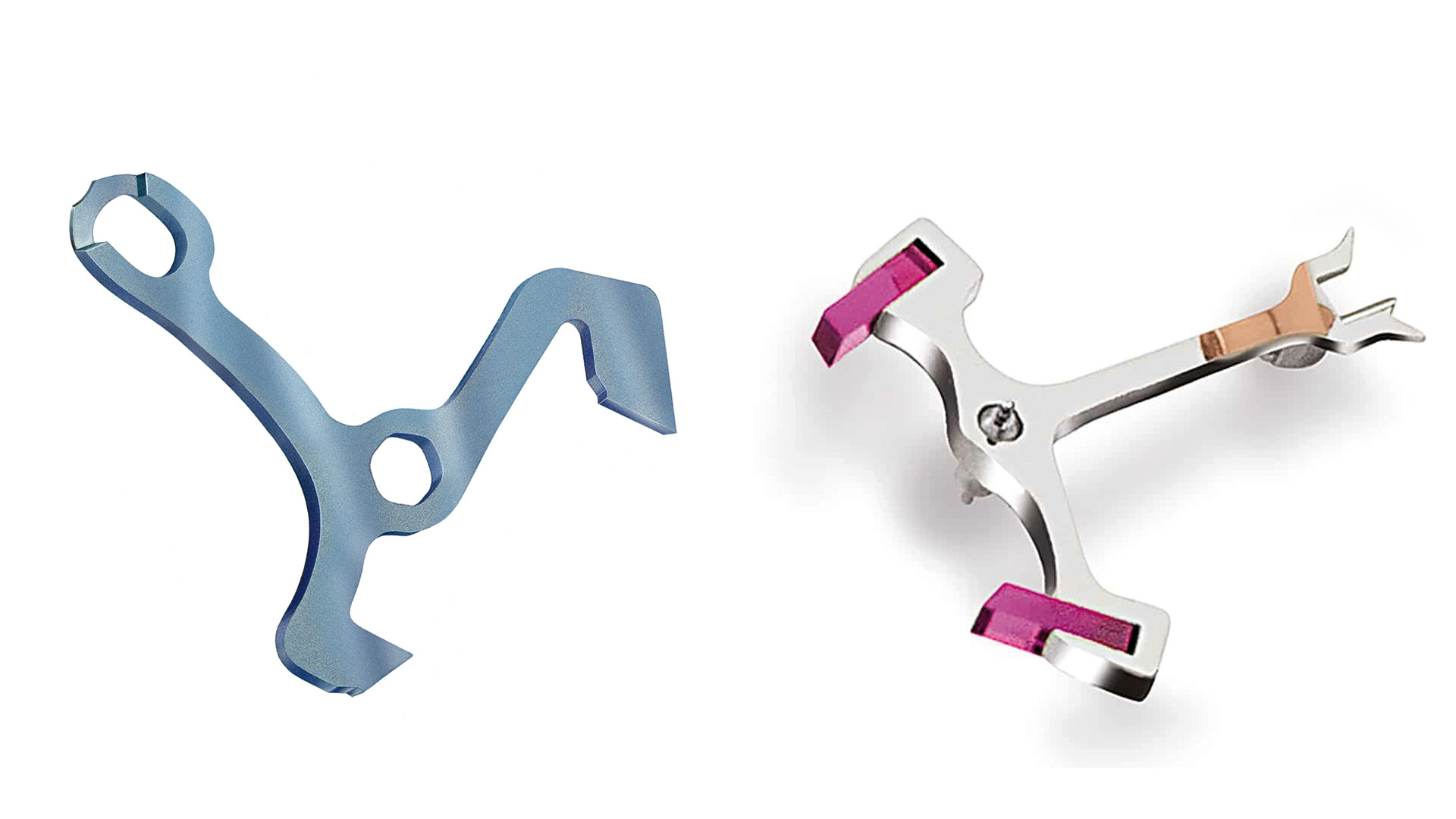
Patek Philippe silicon Silinvar pallet fork (left), classic steel pallet fork with ruby pallets (right)
Furthermore, the safety blade, which in ordinary Swiss lever escapements is supposed to prevent the unintentional shifting of the lever fork that can be caused, for example, by vibrations, is unnecessary when it comes to the new Silinvar pallet fork. A bridge that is etched out of the material on a second horizontal plane at the end of the pallet fork takes over this task (also visible on above picture).
The new escape wheel
By significantly enlarging the two (integrated) pallet forks, the number of teeth on the escape wheel could be reduced from 20 to 16. This reduces the contact time of the pallet forks on the escape wheel, which in turn saves energy. The new Pulsomax escapement allows Patek Philippe to not only improve the rate, but also increase the rate autonomy by 30%, from 48 hours to 62 hours.

Patek Philippe escapement wheel made of silicon Silinvar (16 teeth instead of the usual 20)
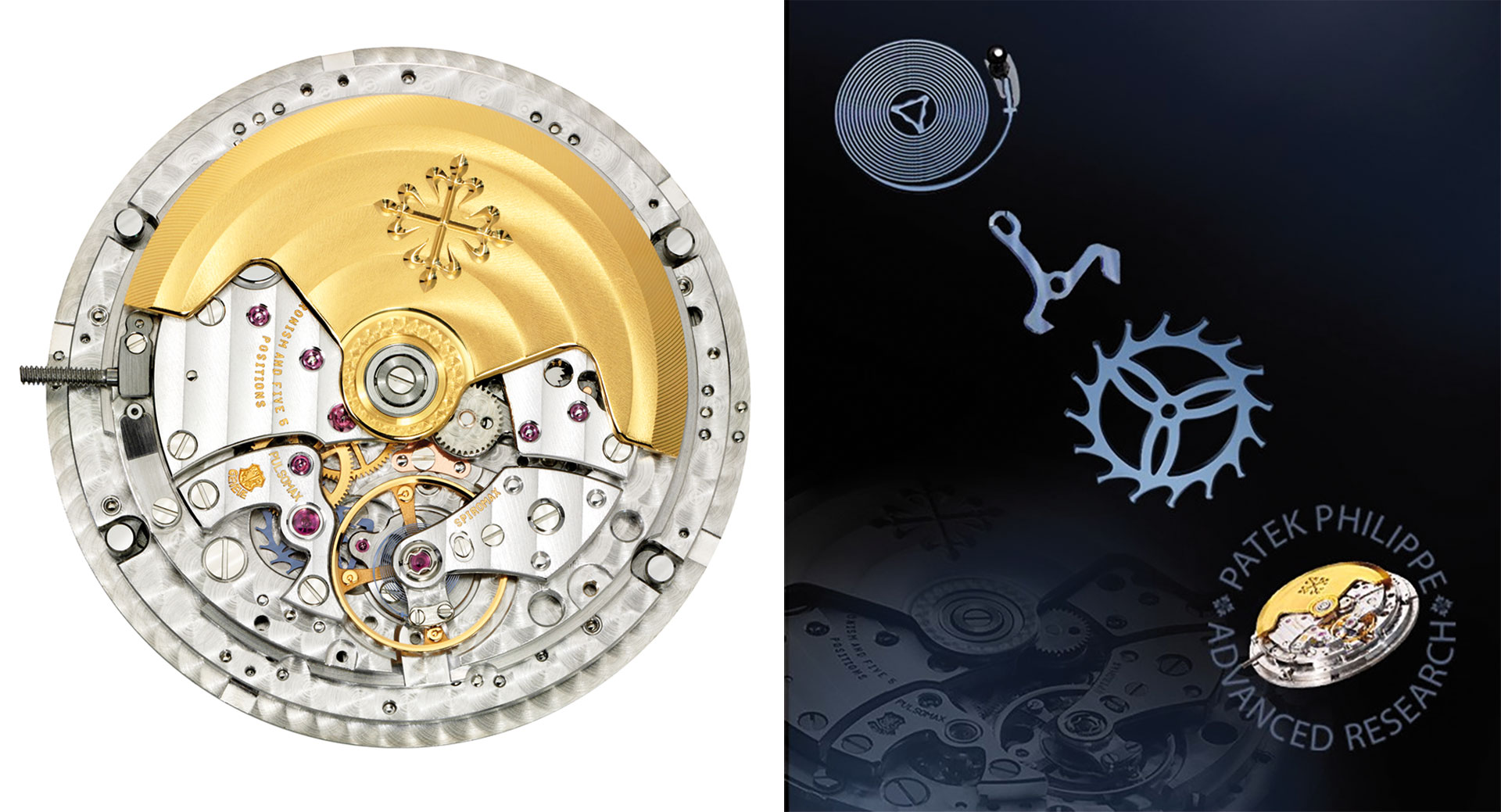
Calibre 324 S QA LU – Ref. 5450
By the way, the Pulsomax escapement then found its way into series production in 2011 with the launch of the Reference 5208P (calibre R CH 27 PS QI). Also, since 2010, all models with calibre 324 and chronograph calibre CH 28-520 PS have been equipped with Spiromax hairspring.
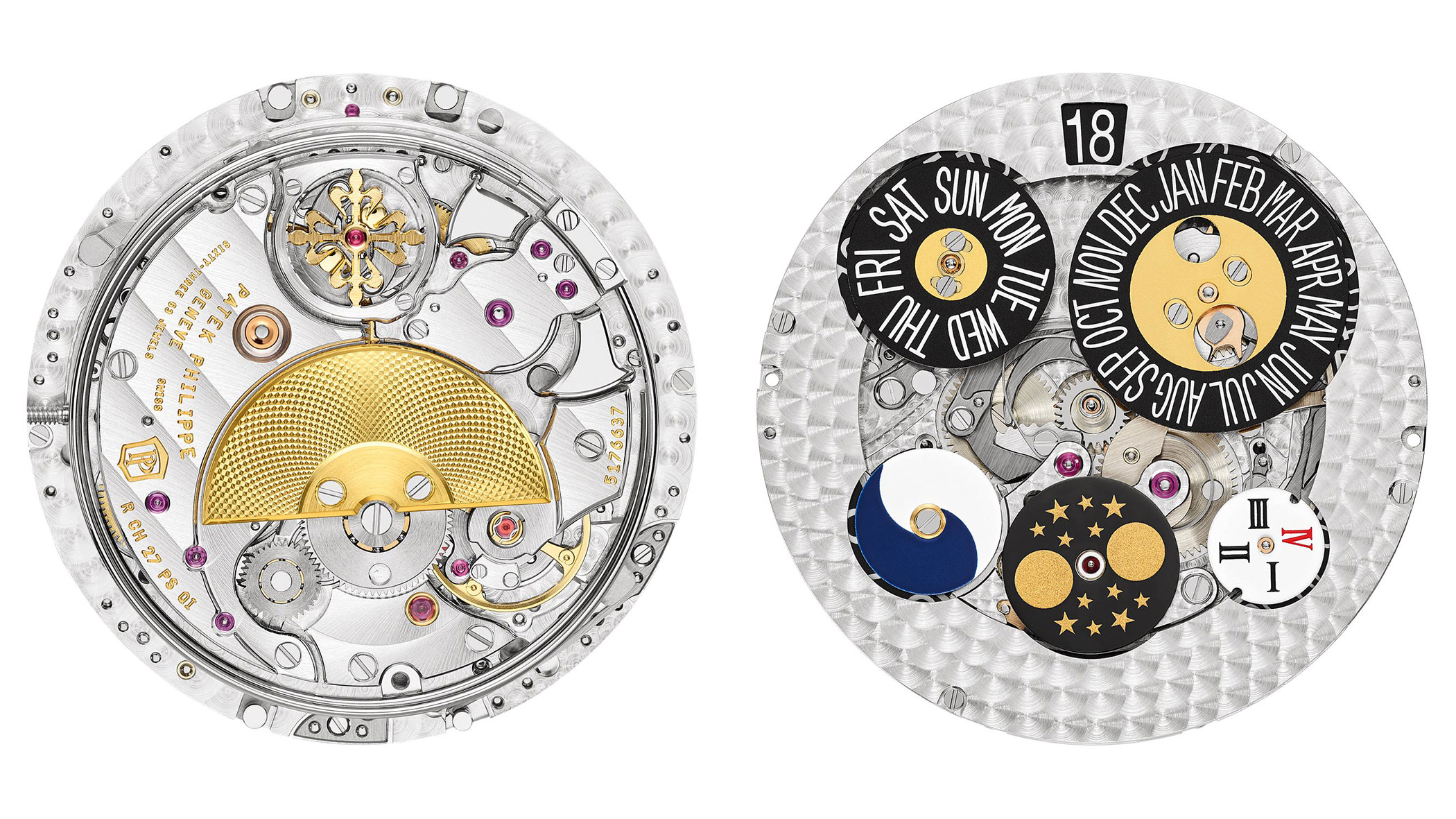
Kaliber R CH 27 PS QI – Ref. 5208
2011
Patek Philippe Advanced Research Perpetual Calendar Ref. 5550P
(Limited to 300 pieces)
Until now, the balance wheel has been spared by the technicians of the Advanced Research department. That came to an end in 2011. This year, Patek Philippe presented the new GyromaxSi balance, or Oscillomax, – the name for the entire assembly of the Spiromax hairspring, Pulsomax escapement and new GyromaxSi balance spring.
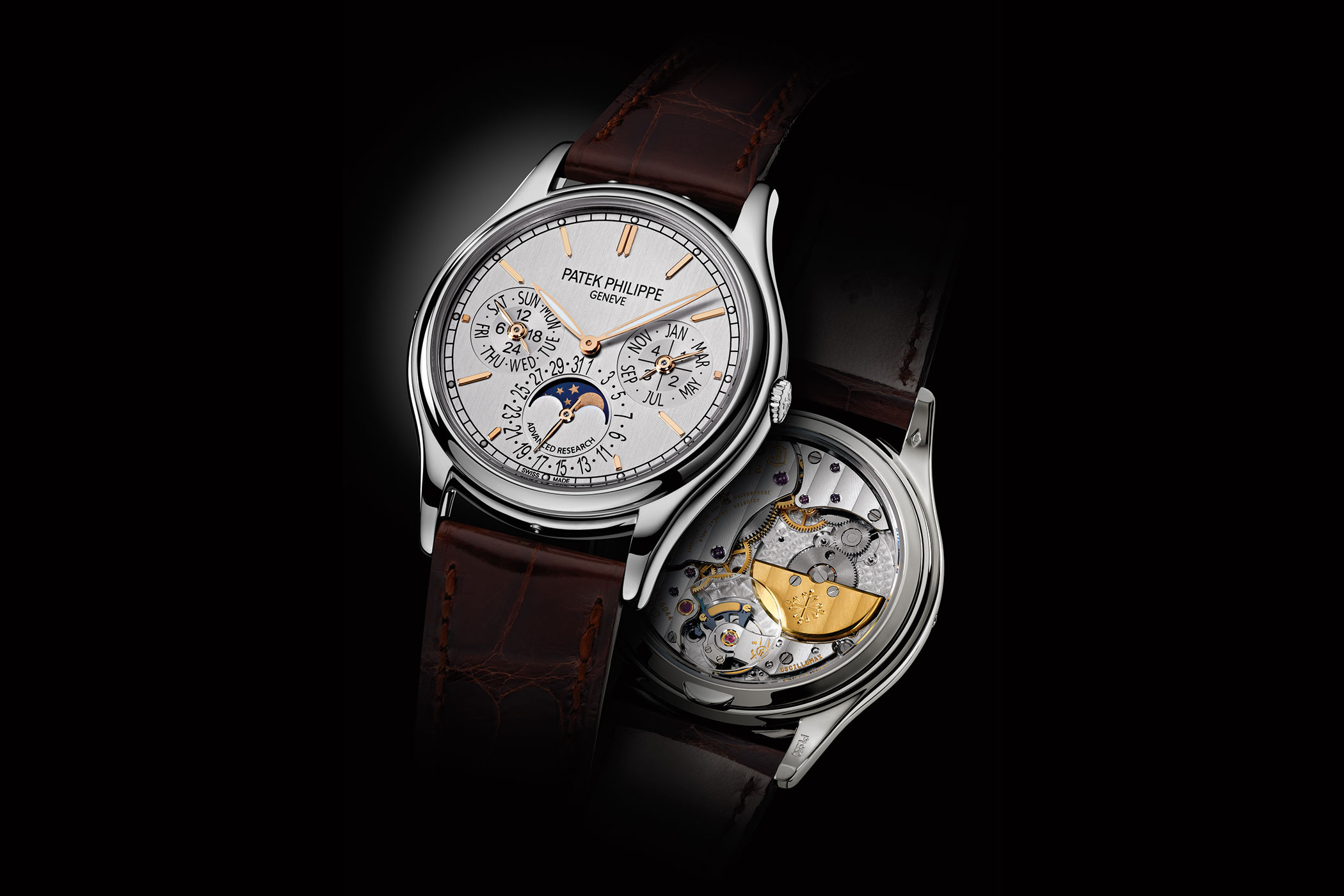
Advanced Research Perpetual Calendar Ref. 5550P
For the first time, Patek integrated an Advanced Research technology into a perpetual calendar. Previously, only annual calendars were used. The calibre 324 S IRM QA LU became the modified calibre 240 Q Si with Oscillomax assembly. For this new calibre alone, Patek applied for 17 patents alone.
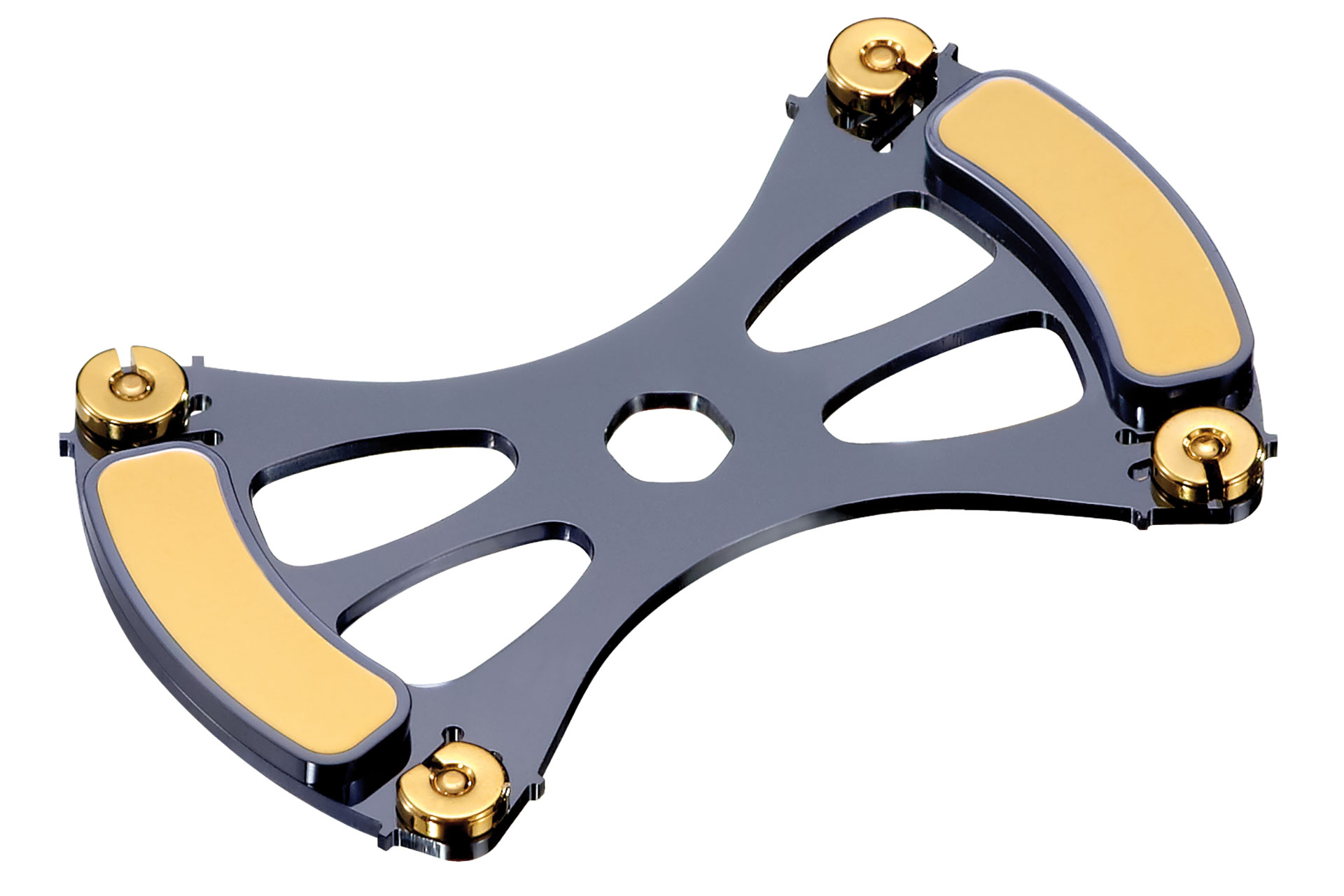
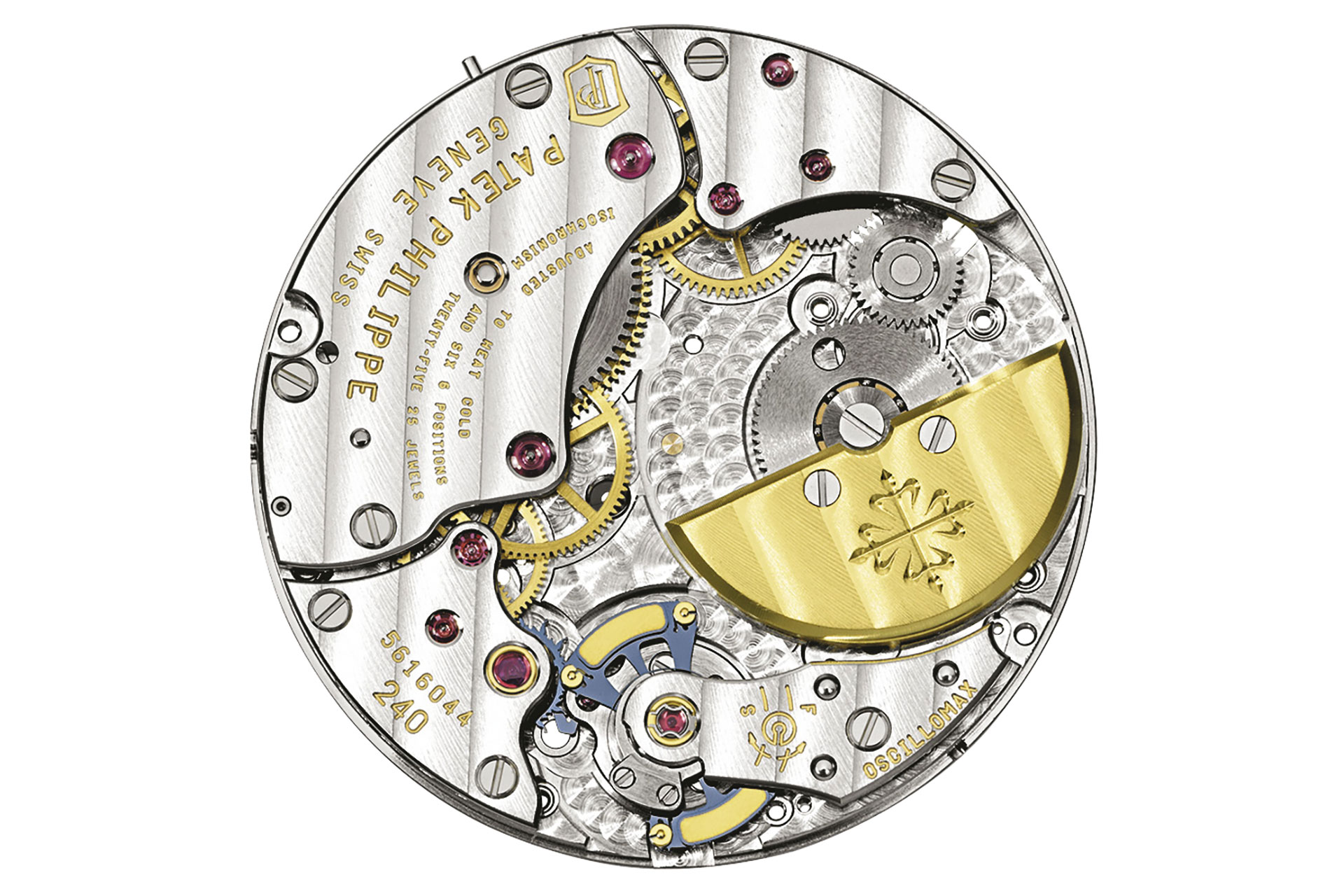
GyromaxSi balance
Delving into the company history books, some will already be familiar with the term Gyromax. In fact, the new GyromaxSi balance was based on a Patek innovation from 1951, when the manufacture first introduced the Gyromax balance, which fundamentally changed common methods of fine adjustment upon an oscillating organ. Fine regulation of a mechanical watch is essential because the sensitive oscillating organ can be greatly affected by various factors. The main factors include weight-related faults of the balance and hairspring, unevenness in the attachment point of the hairspring, play of the hairspring between the back pins, centrifugal forces or magnetic fields, to name just a few disturbing factors.
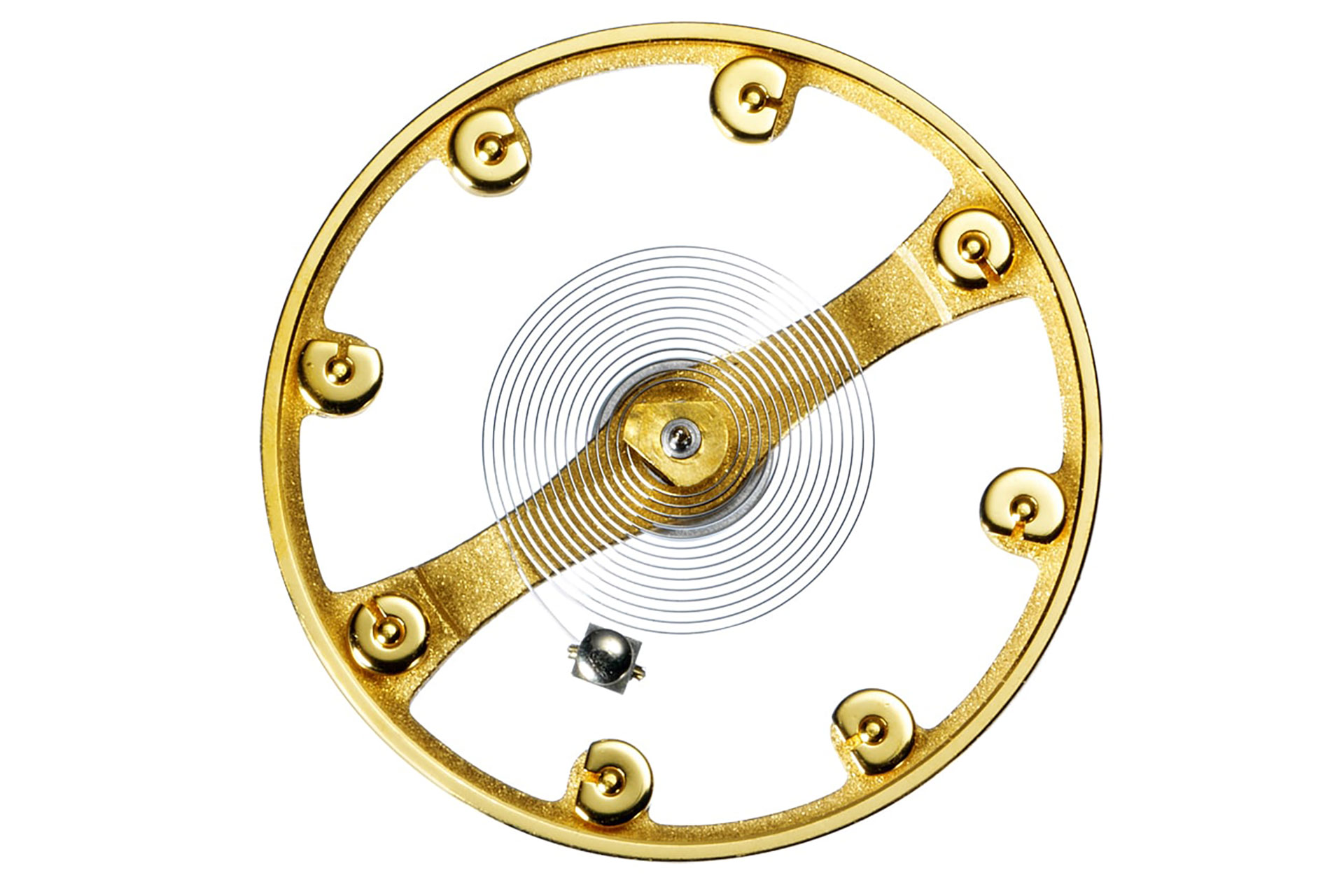
Patek Philippe Gyromax balance from 1951
Usually, rate corrections are made by means of a regulator system, which can be adjusted by the watchmaker with a regulator key. To put it simply: if a movement goes backwards, the hairspring must be shortened; if it goes forward, it must be lengthened. In the regulator system, the outer end of the hairspring passes through two pins, which are used to make the adjustment. The challenge is that the spiral spring must not have any clearance between the pins, but of course must still run through them unhindered. Thus, the mechanism has its pitfalls and is quite vulnerable.
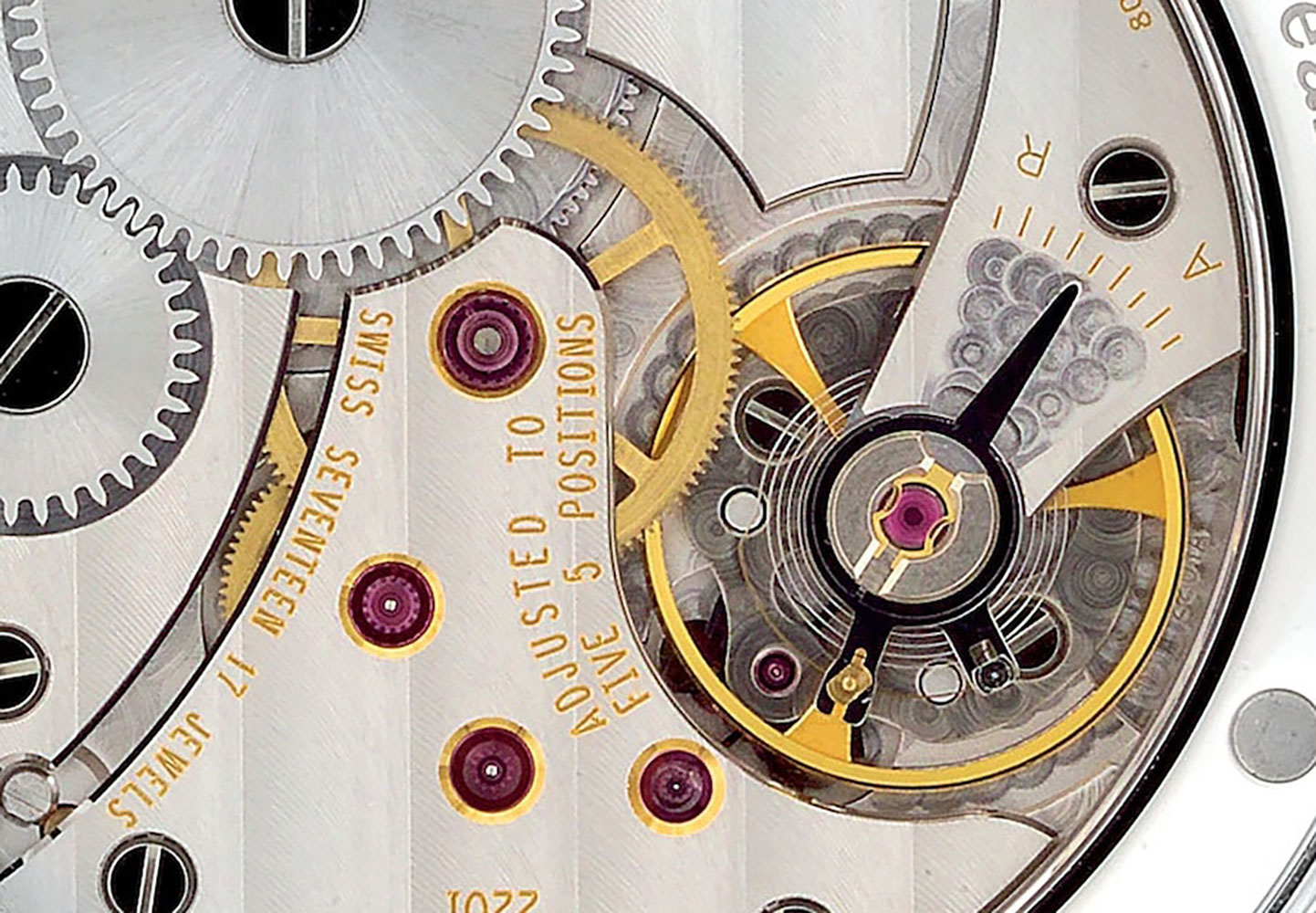
Fine adjustment via regulator system / regulator key (ETA/Unitas caliber)
Credit © Watchtime.net
Yet there is another possibility for fine adjustment or rate correction: via the moment of inertia, which can be changed by weight or diameter of the balance rim. Using so-called mass screws on the outer edge of the balance rim, the weight and diameter can be influenced by screwing them in or out. This causes the balance to oscillate either faster or slower. In practice, this can be imagined as follows: if a figure skater puts her legs and arms against her body during a pirouette, she speeds up – due to the moment of inertia. If she extends her arms and legs, she slows down. In the balance wheel, the principle works in the same way. The advantage of regulating by weight and diameter is that the hairspring can oscillate completely freely, unlike the susceptible regulator system.
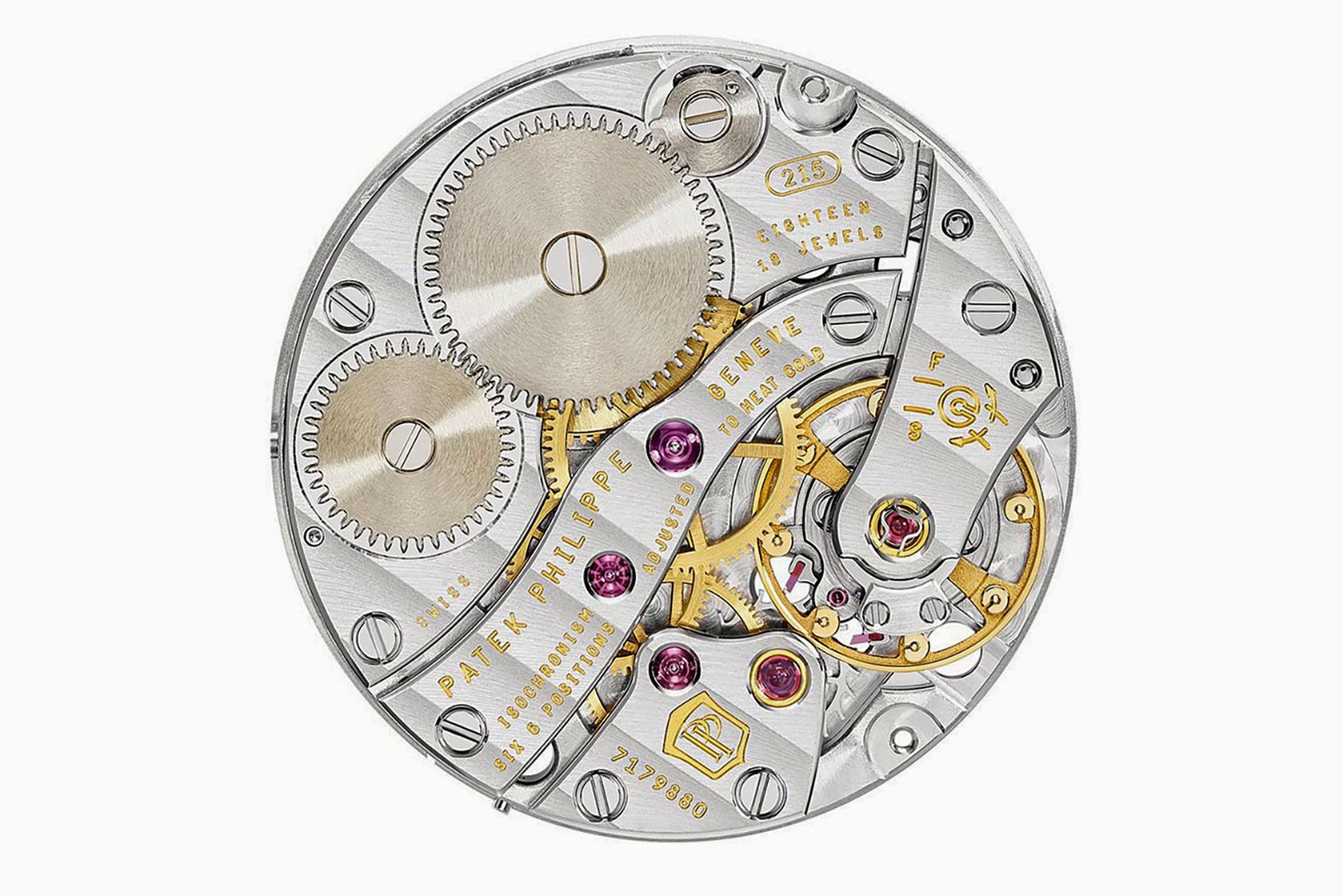
Fine adjustment by moment of inertia.
Gyromax balance wheel from Patek Philippe
However, in the late 1940s, engineers at Patek realized that they could also use the moment of inertia on the balance rim more efficiently. They removed the regulating screws on the outer edge of the balance rim and were able to use the space saved to increase the radius of the balance, which automatically resulted in a higher moment of inertia. The mass screws were replaced by asymmetrically shaped and slotted regulating discs and mounted on the balance rim. The Gyromax balance was born and eventually patented on December 31, 1951.
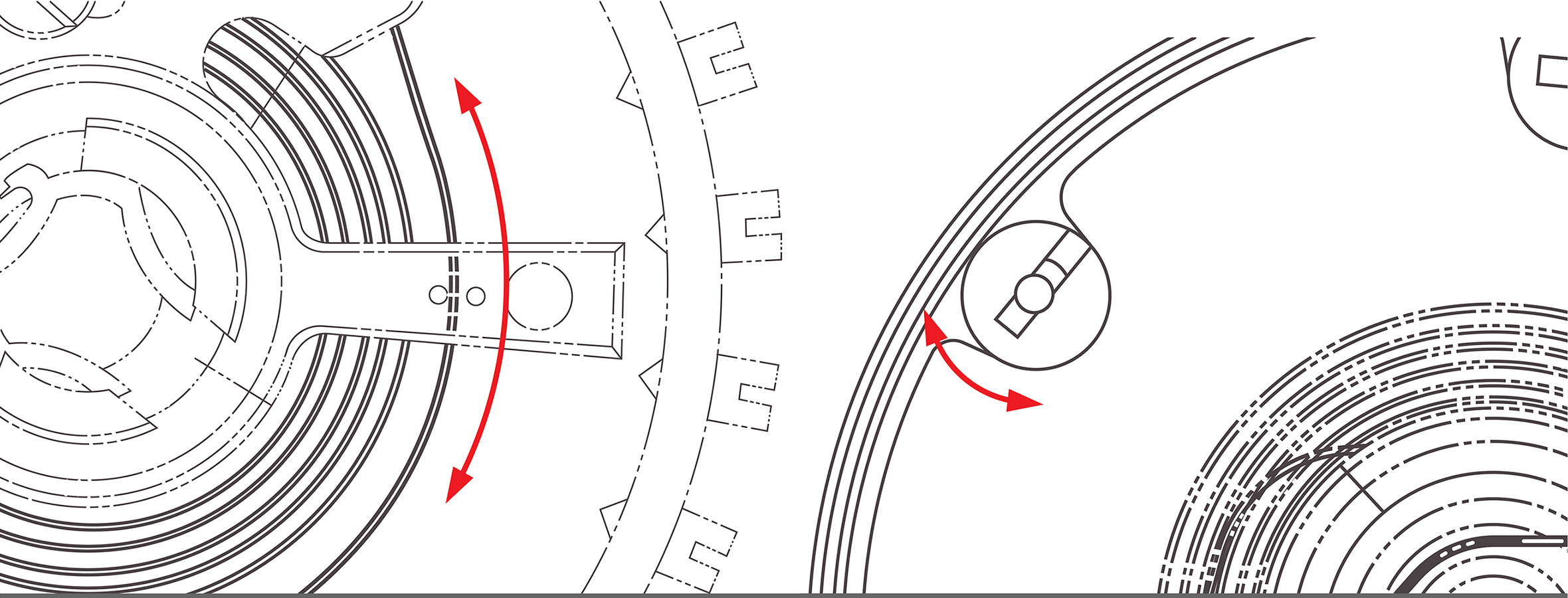
Fine adjustment methods
The GyromaxSi balance from Patek Philippe
Sixty years later, Patek Philippe introduced a heavily modified Gyromax balance, emerging from the manufacture’s Advanced Research Department. The GyromaxSi balance is hourglass-shaped, consisting of silicon Silinvar and 24-carat gold. Engineers found that when a commonly shaped ring balance oscillates, 60% of the energy is lost due to air resistance. As a result, they adjusted the aerodynamics of the balance rim. To achieve the best possible moment of inertia, the balance should be as light as possible in the centre and heavier towards the outside. Therefore, the outside of the GyromaxSi balance was weighted with two 24-carat gold masses. For fine adjustment, there are four slotted regulating discs on the periphery next to the two gold masses.
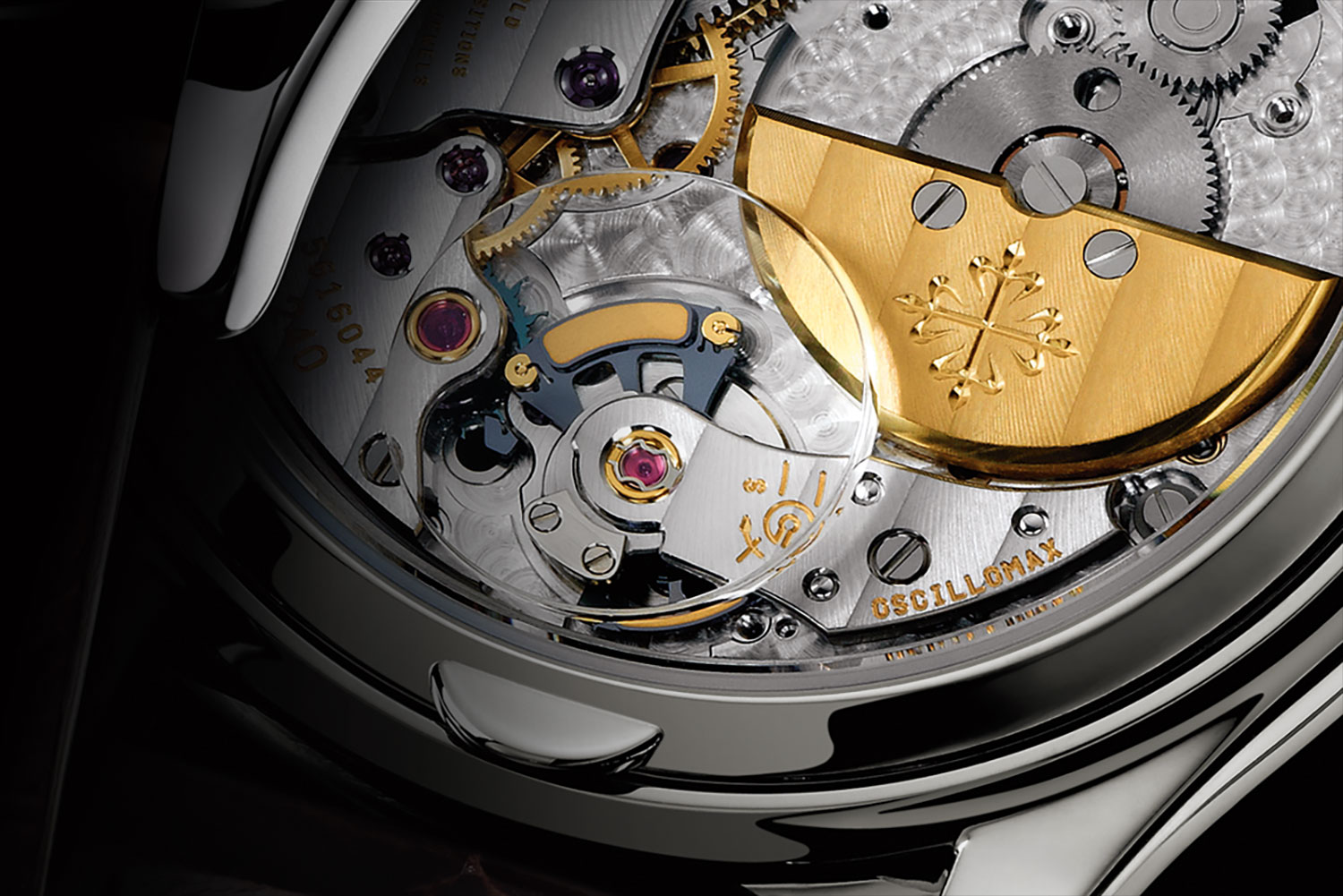
The GyromaxSi balance – Ref. 5550P
Thanks to the invention of silicon hairsprings, adjustment by means of a moment of inertia is no longer so crucial, because the hairspring can be calculated and manufactured to the exact length when it is assembled, and then it no longer changes shape – so it doesn’t need to be serviced. The new aerodynamics of the hourglass-shaped balance and optimal weight distribution is probably the more decisive factor here, contributing to the rate improvement. In addition, a thinner and thus longer mainspring is possible, with lower drive torque.
The framework of the new balance is also manufactured using the DRIE process. The energy gain compared to a conventional ring balance is more than 20%. The power reserve could be increased from 48 to 70 hours.
To summarise it: Pulsomax + Spiromax + GyromaxSi = Oscillomax
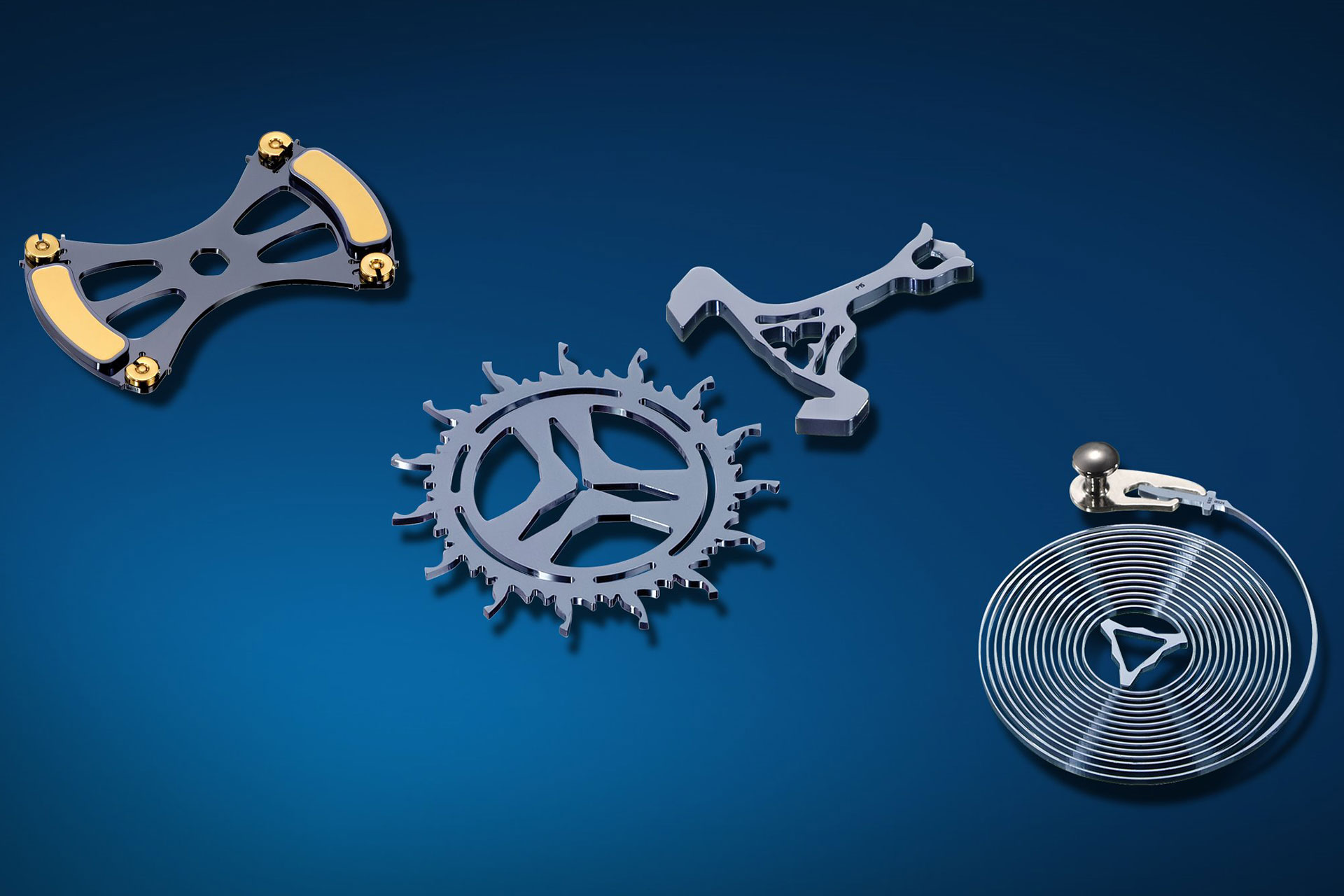
2017
Patek Philippe Advanced Research Aquanaut Travel Time Ref. 5650G
(Limited to 500 pieces)
After a long six years of waiting, Patek Philippe introduced two innovations in 2017 as part of its Advanced Research programme. First, a revised Spiromax hairspring with an additional inner effervescence (Patek End Curve) was presented. As you hopefully remember, in 2006, an outer end curve provided concentric oscillation in and out of the balance spring. A new, additional end curve on the inside should counteract the influence of gravity. The regulating organ of a mechanical watch is mainly exposed to this in a vertical position. An alternative to this is also offered by a tourbillon – but here we’re talking about a different mechanism.
Advanced Research Aquanaut Travel Time Referenz 5650
With the modified Spiromax hairspring, Patek was able to exceed the rate accuracy compared to the common standards for mechanical watches. For certified COSC chronometers, the tolerance is -4 to +6 seconds per day. For Spiromax hairspring with outer and inner Patek end curve, the average rate can be regulated from -2 to +1 seconds per day. Here, we are in the same tolerance range as for the manufacture tourbillons.
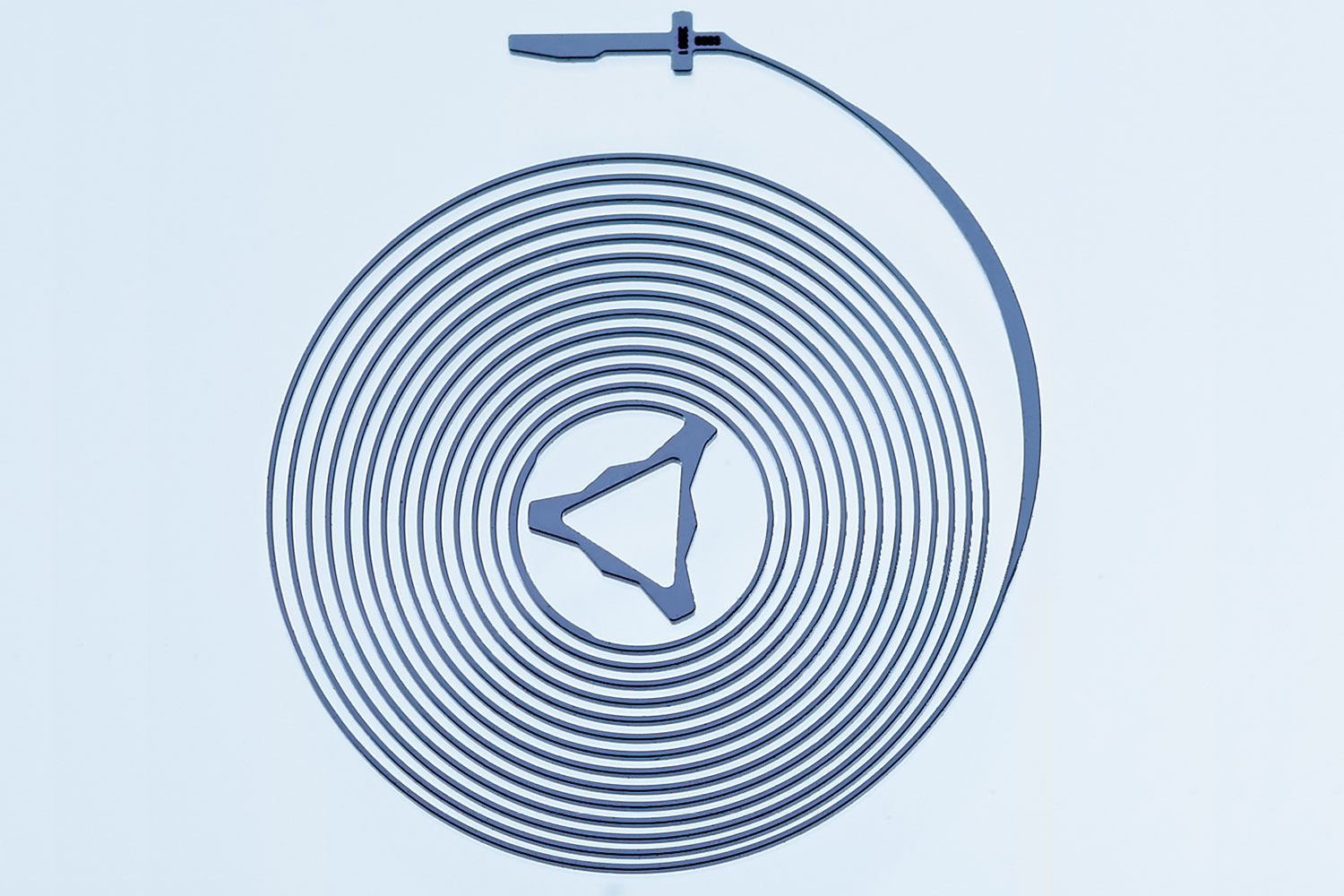
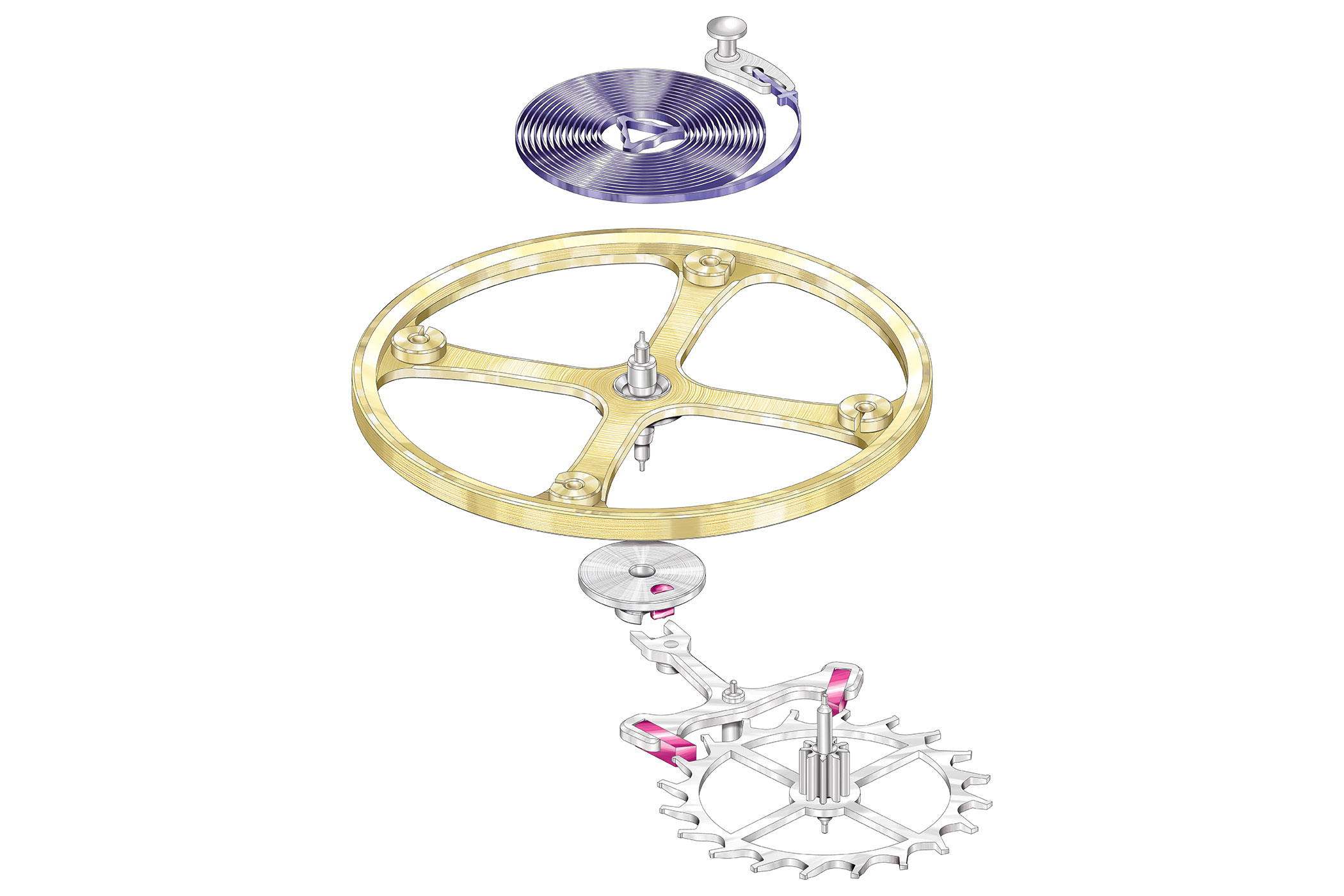
Modified Patek Philippe Spiromax hairspring
The second innovation is a time zone corrector with an elastic solid joint. It replaces several springs and levers and consists instead of four intersecting leaf springs: two for each corrector pusher. The new corrector thus consists of only 12 instead of 37 individual parts, has a flatter design of 1.24 mm compared to the usual 1.45 mm, reduces friction and thus wear as well as power consumption, and does not need to be lubricated. For the first time, part of the dial has also been exposed, so that the new solid-state joint can be seen through the open aperture.
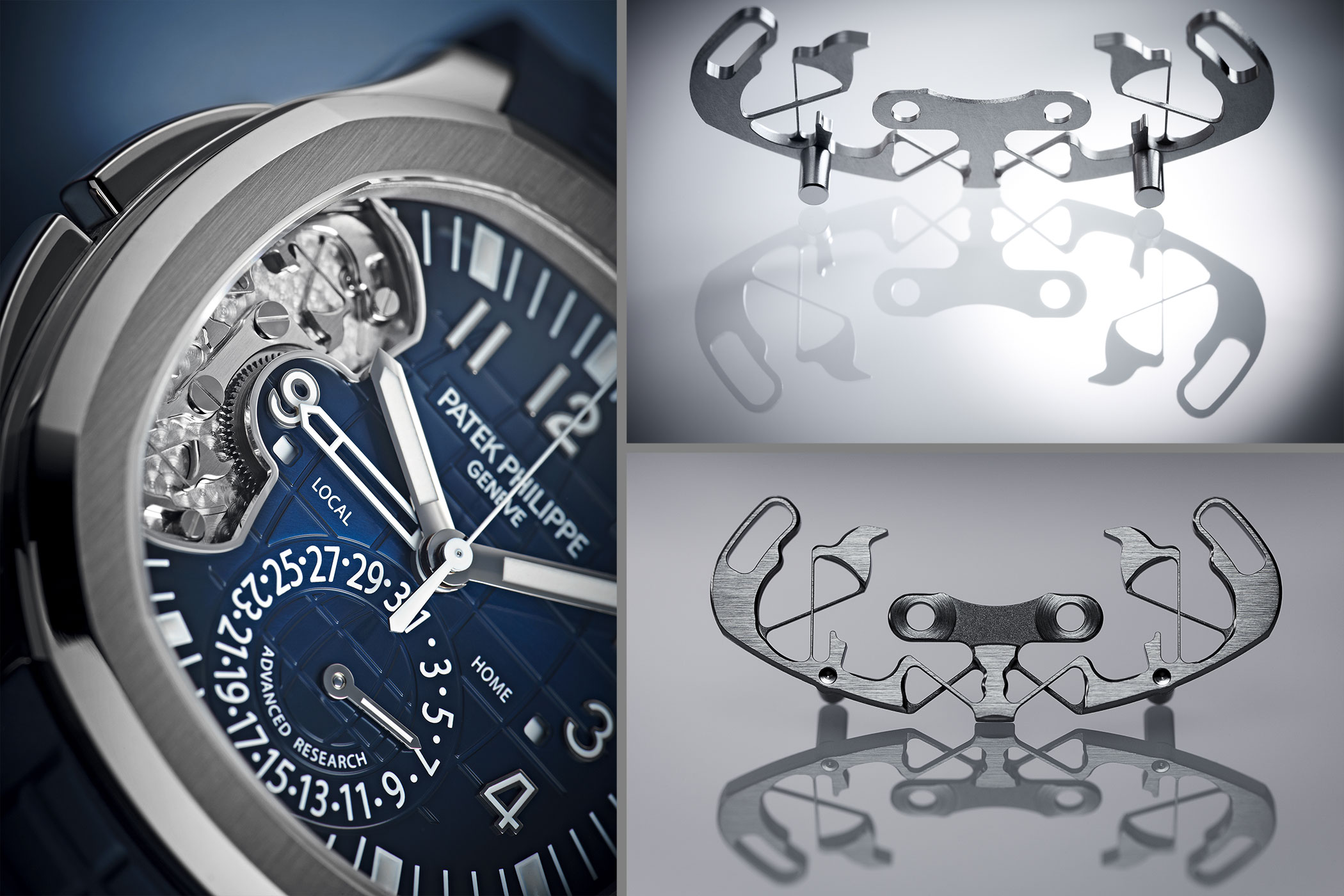
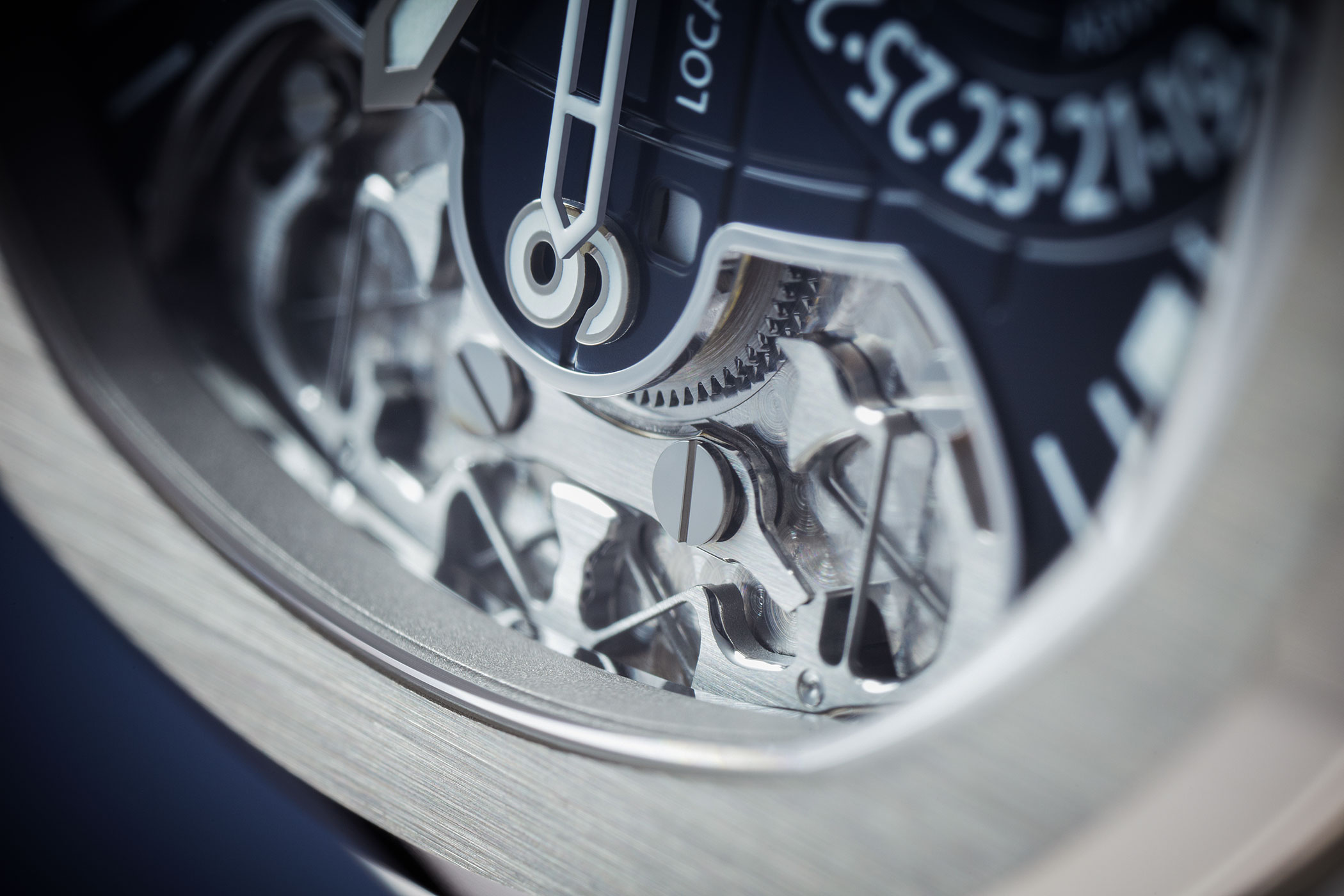
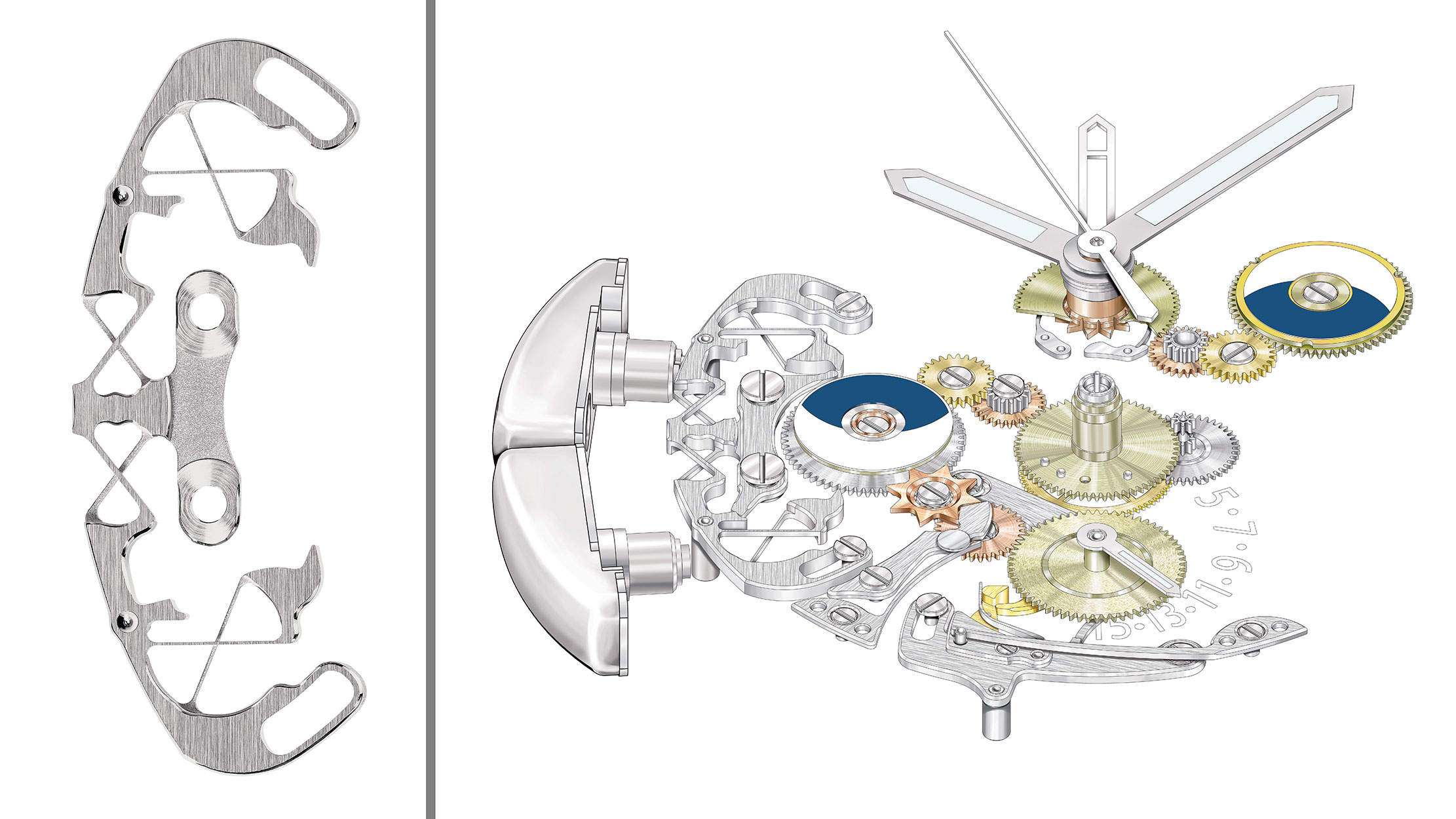
2021
Patek Philippe Advanced Research Fortissimo Ref. 5750P
(Limited to 15 pieces)
After four years, many watch fans hoped and speculated the launch of a new Advanced Research model. At the end of 2021, the time finally came. In December, the manufacture unveiled the Advanced Research Fortissimo Ref. 5750, limited to just 15 pieces, a modest availability never before seen for a model from Patek Philippe’s main forge of innovation.
Advanced Research Fortissimo Ref. 5750
This time, the focus was not so much upon the watch’s regulating organ, but on the sound quality of its minute repeater, which Stern has made a top priority and for which the horology house is so highly regarded by many customers. The established calibre R 27 PS, which was already introduced in 1989, served as the basis. The repeater mechanism, however, was fundamentally revised. The “ff” fortissimo amplifier system was installed on the bridge side of the new model. It consists of a sound lever and oscillating plates made of sapphire crystal. The sound lever is attached to the hammers and reaches into the center, where it is supported by the sapphire crystal caseback.
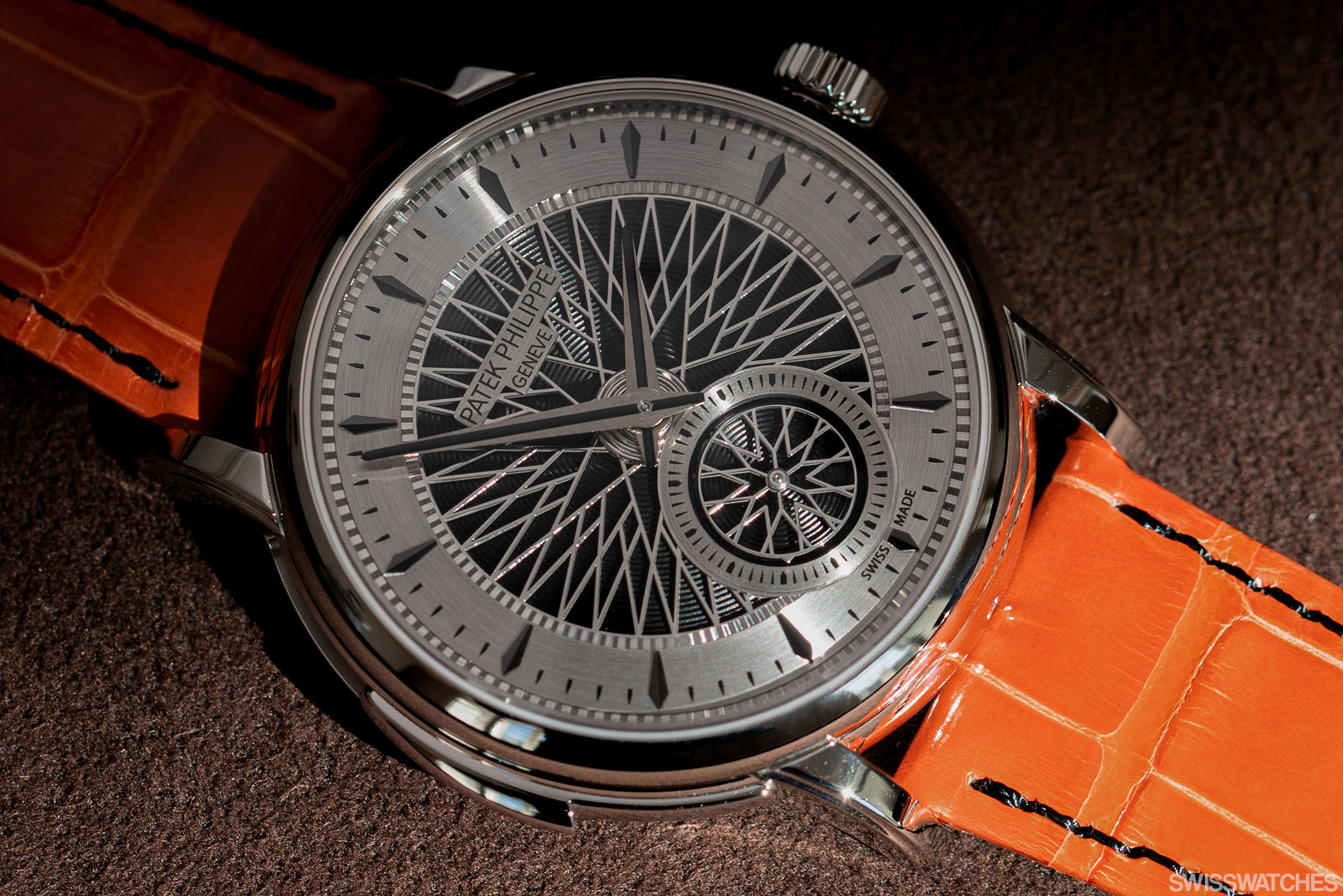
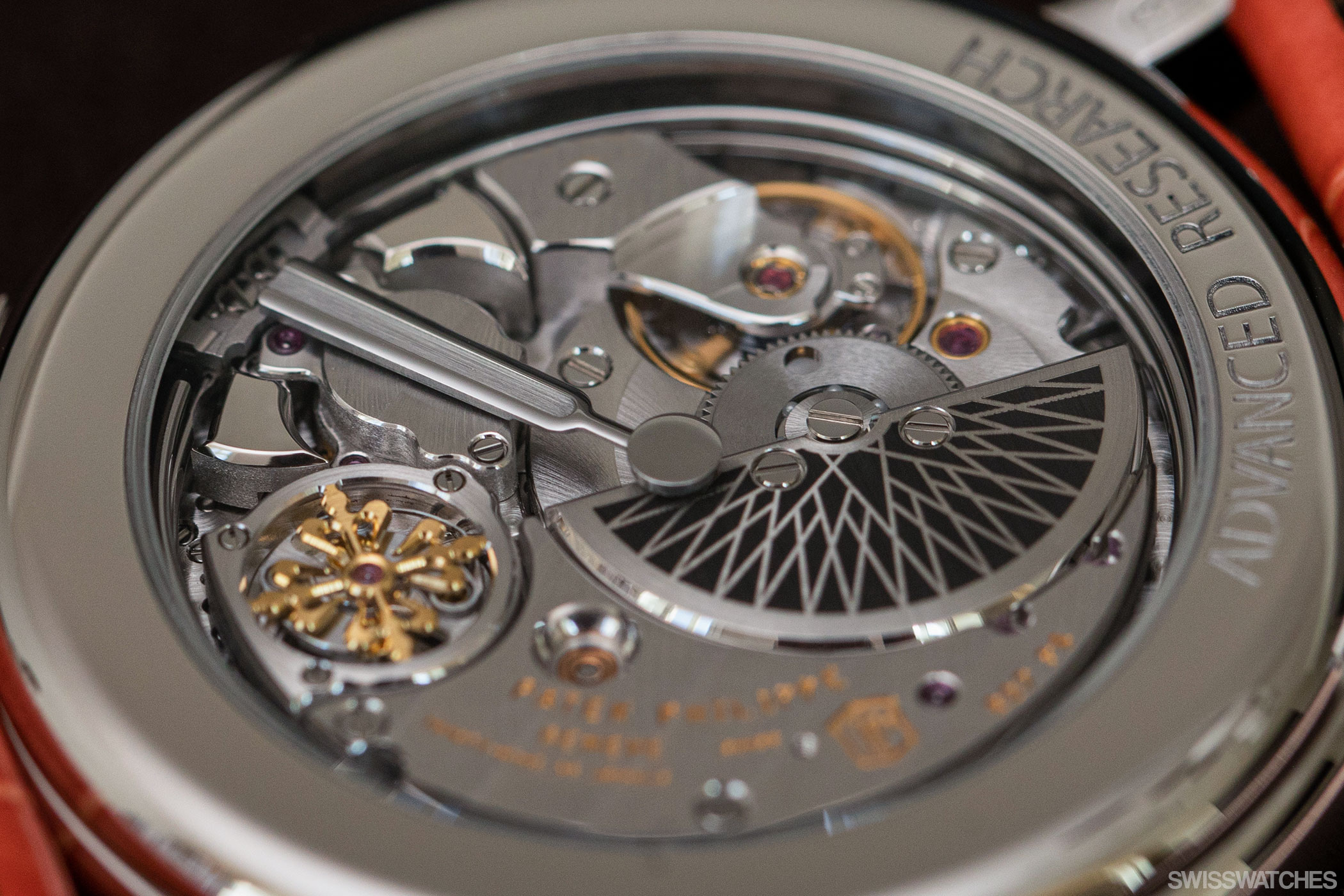
Like a traditional minute repeater, hammers strike a sound gong that spirals around the movement. However, the floating sound lever absorbs the vibrations before they can spread through the case. The sound then reaches the sapphire crystal plate where the actual amplification takes place. Similar to the funnel of a gramophone, the plate amplifies the vibrations. The sound then escapes exclusively through four openings in a titanium hoop at 12, 3, 6 and 9 o’clock. With this system, the chimes can still be heard up to 60 meters away. A common repeater, on the other hand, is only audible up to 10 meters. Since the amplifier system is completely decoupled from the movement, the case material has no influence on the sound quality.
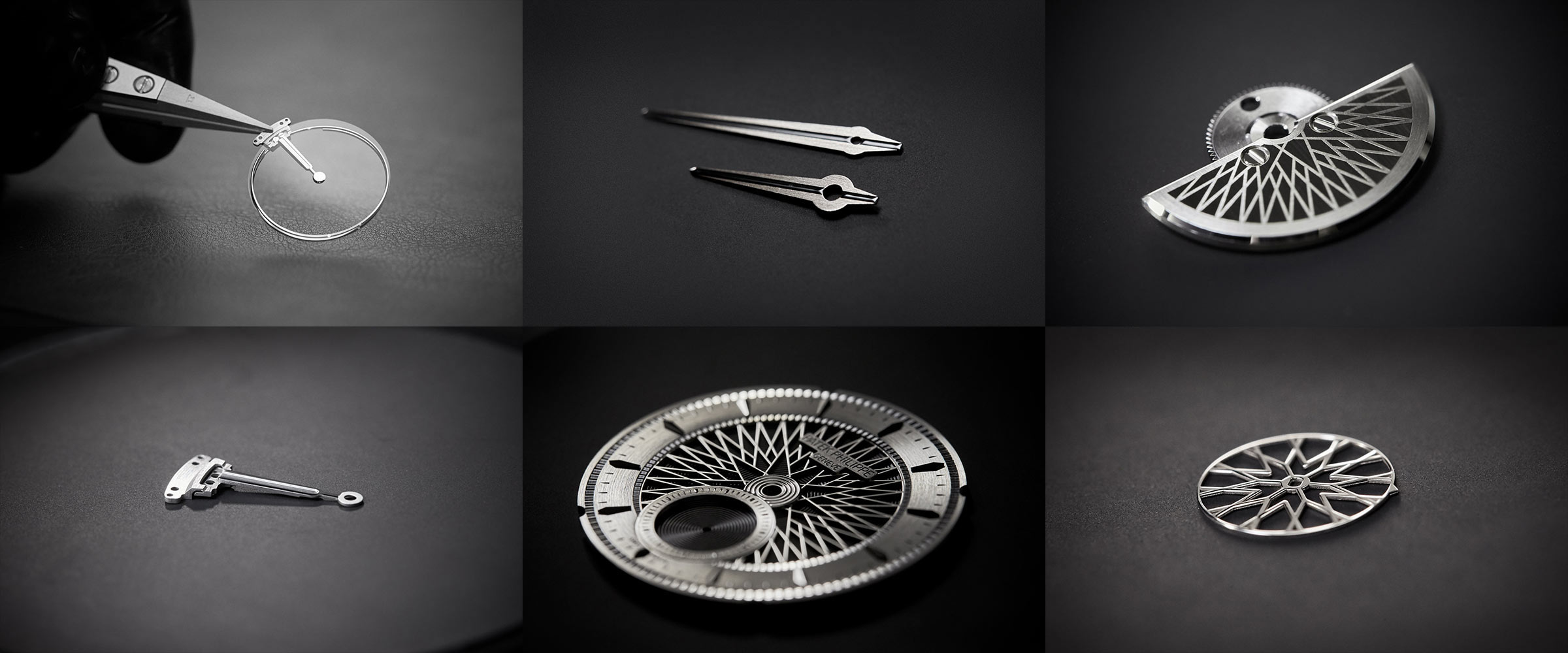
So, there we have the new platinum Advanced Research Fortissimo Ref. 5750. Despite the new module, the watch measures only 11.1 mm in height, hardly thicker than other repeaters of the maison. The platinum micro rotor also contributes to this, which was able to be made a little flatter due to the higher density of the material. The hammers are also made of platinum, which improves the sound quality even more.
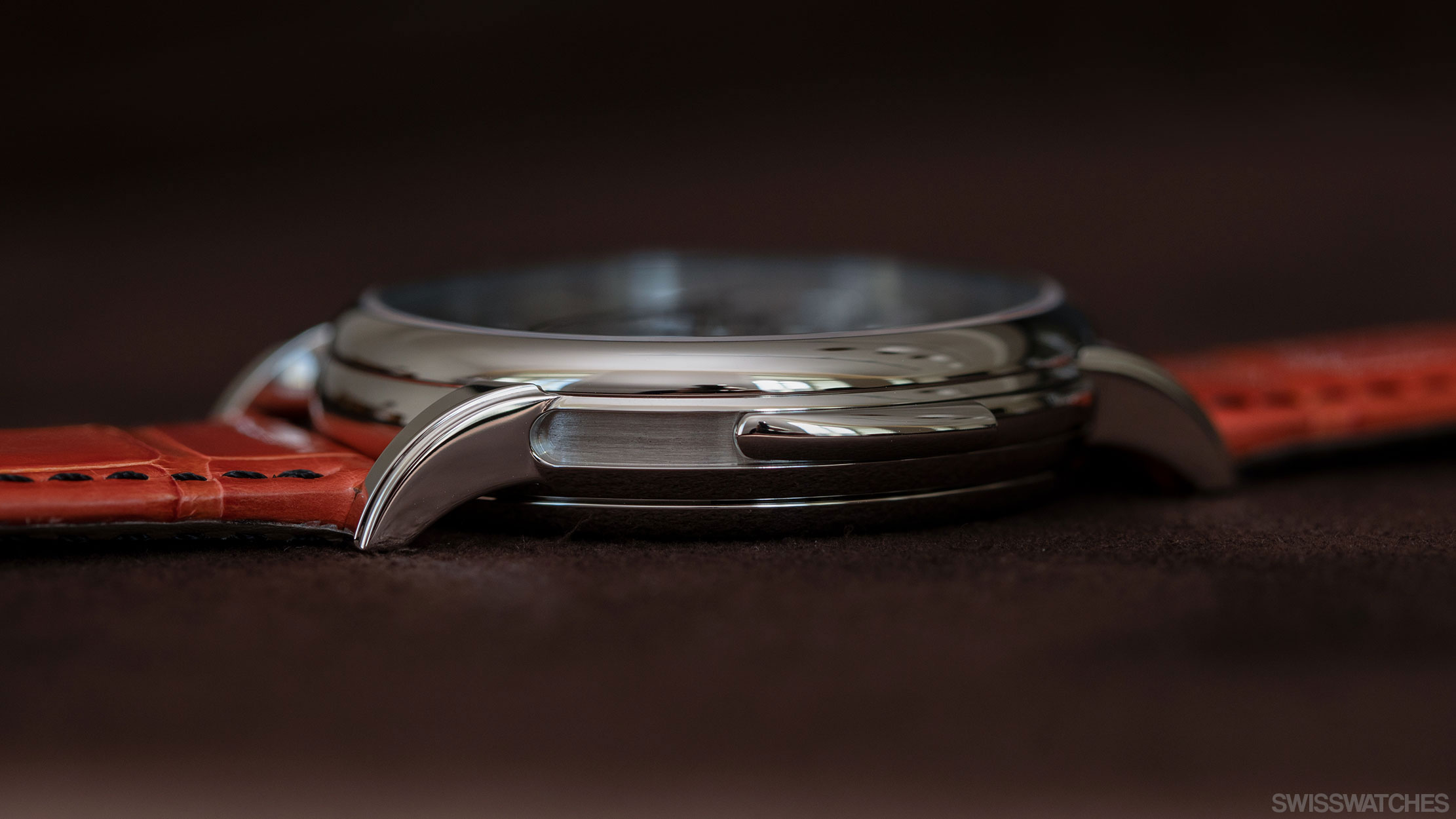
Final thoughts
The Advanced Research programme gives a wonderful insight into life behind the ingenious scenes of the manufacture and takes us far away from the sometimes mindless Nautilus hype. Many would probably not have expected that such a seemingly conservative manufacture as Patek Philippe would be the one to determine the watchmaking of tomorrow. It will probably be another few years before we see a new model from the high-tech laboratories of Patek Philippe’s Advanced Research department. In the meantime, its competition will have to come up with their own innovations, because the Patek patents make the technologies difficult to copy, while its creative resolve is unchecked. By then, Patek will probably be three steps ahead again anyway; it’s down to progress through technology after all.
